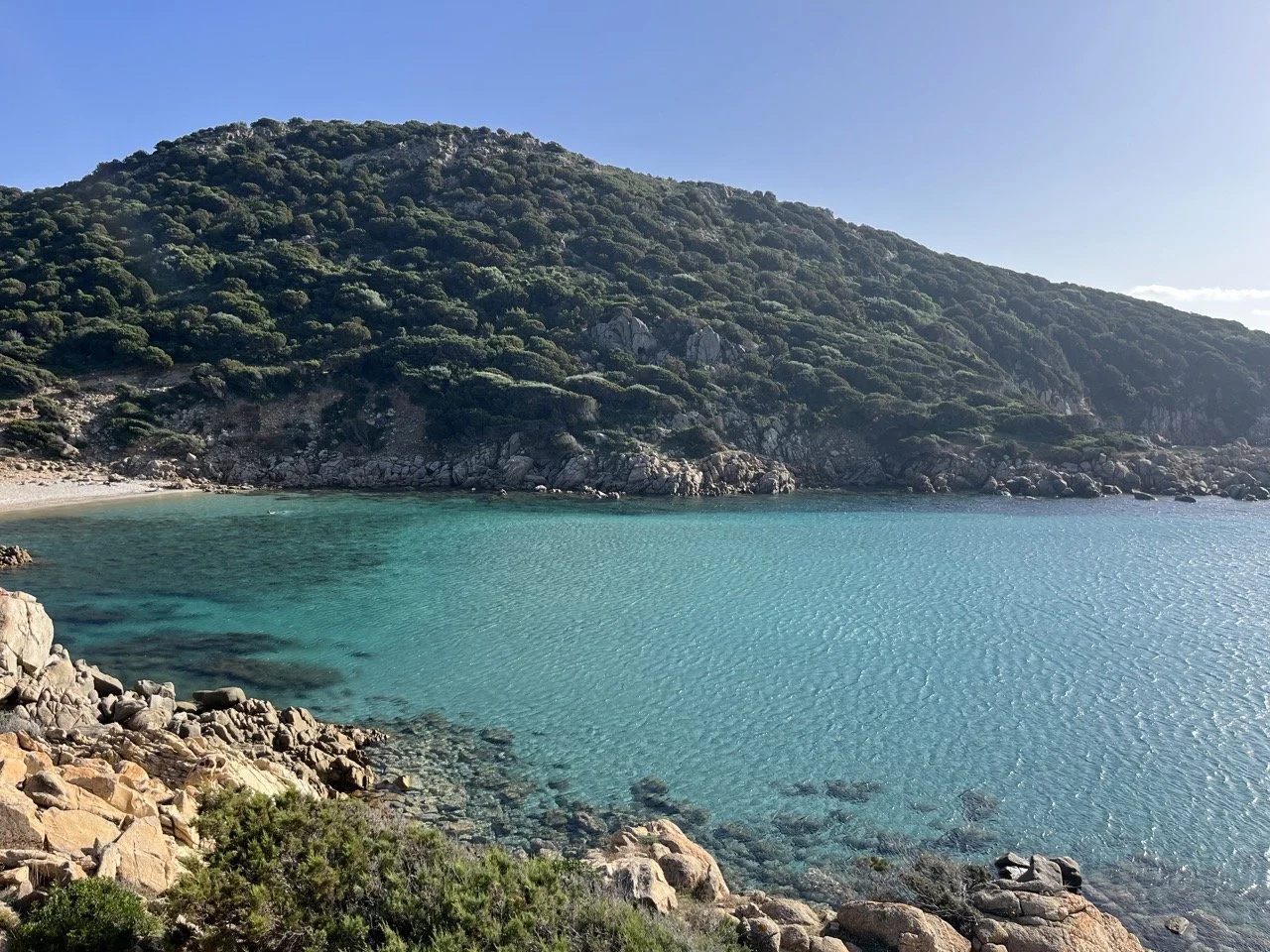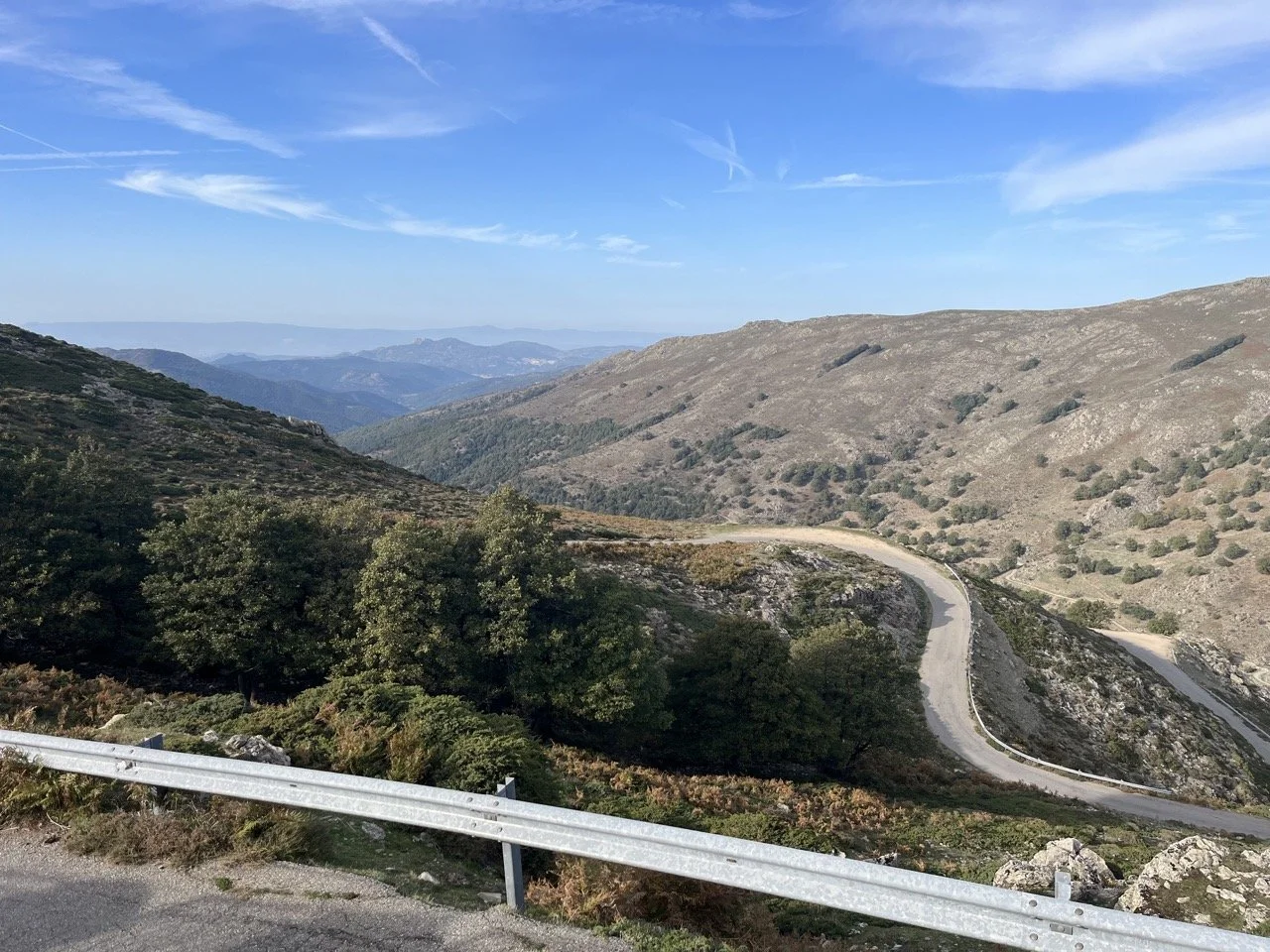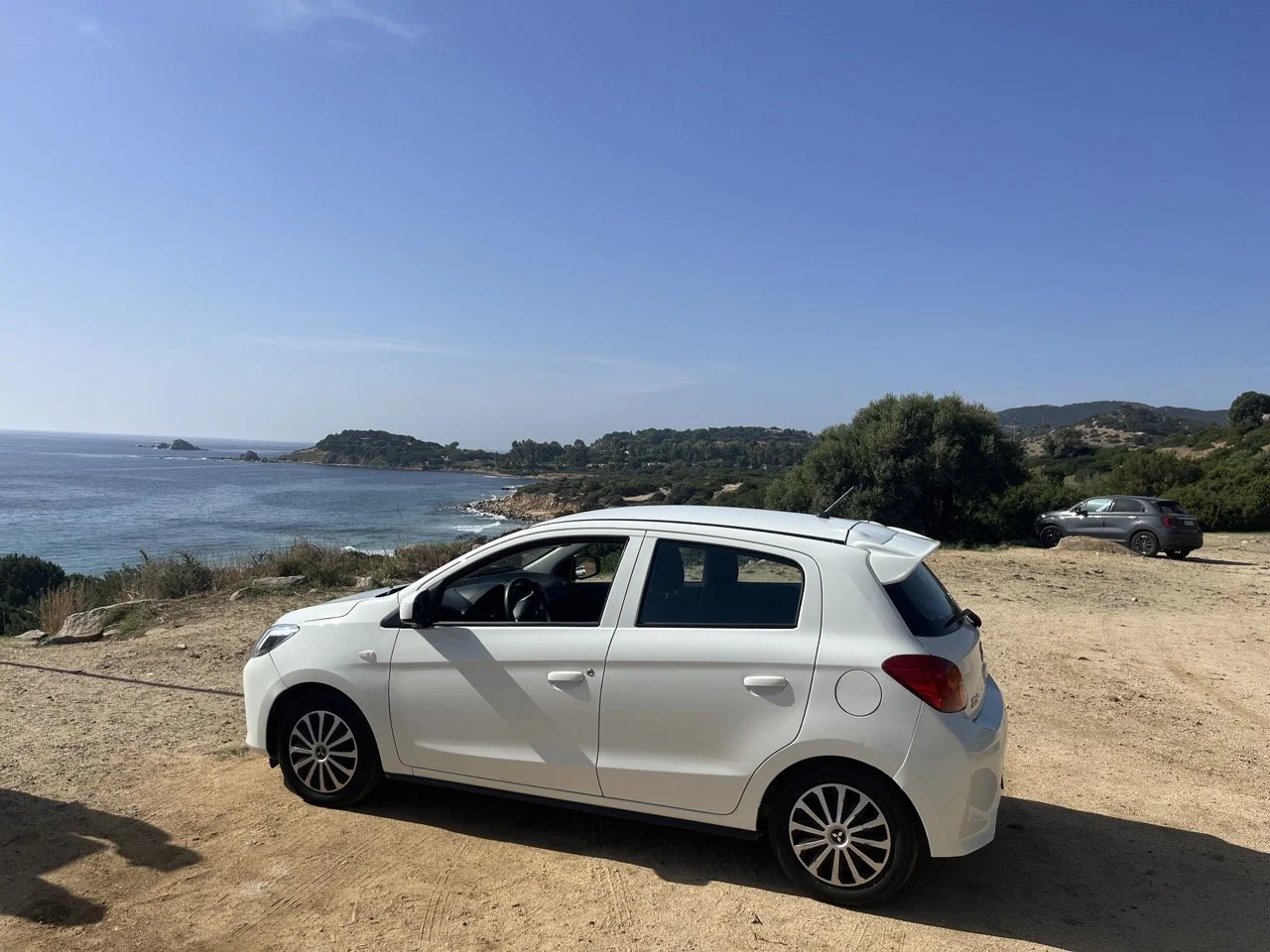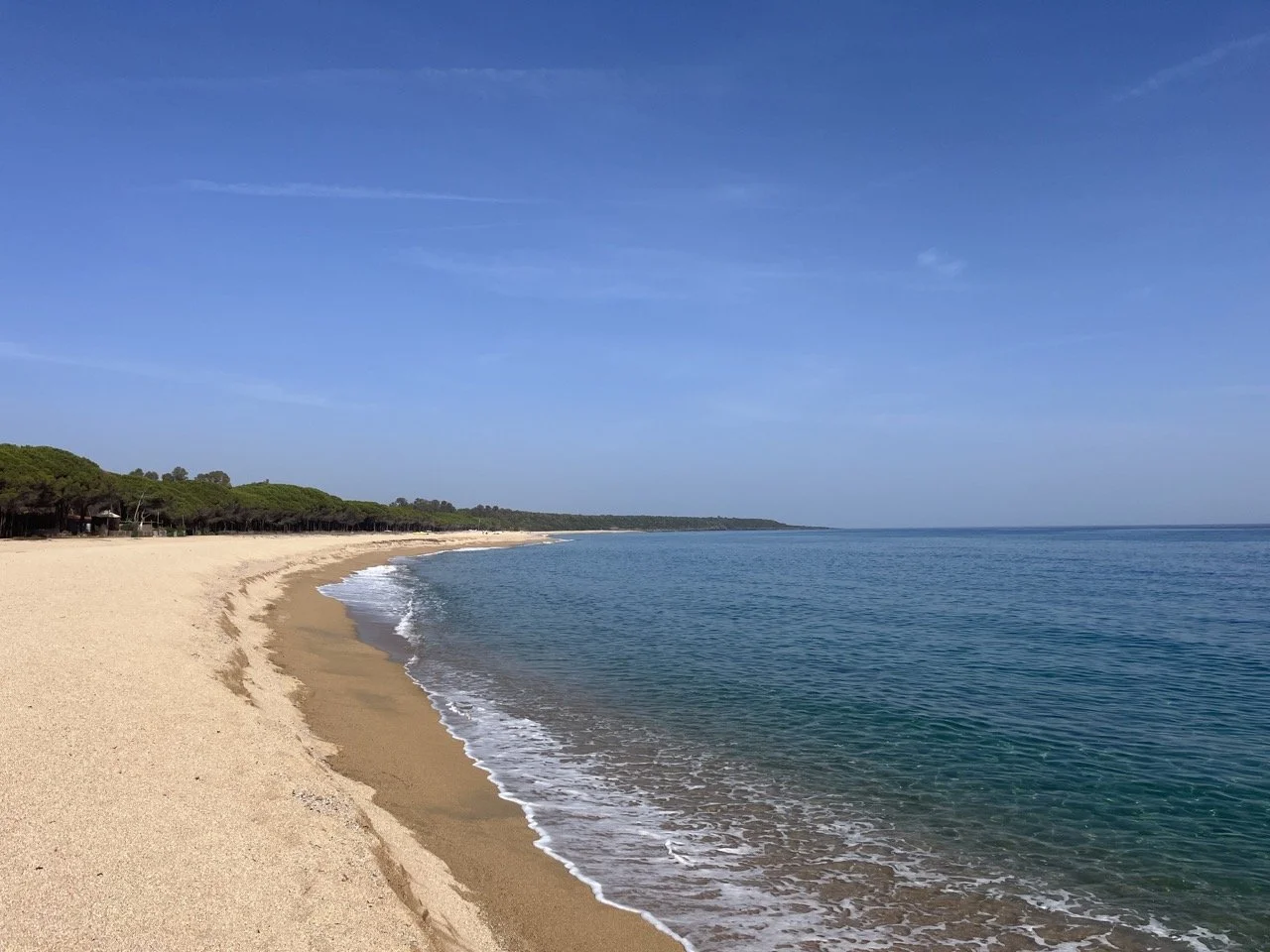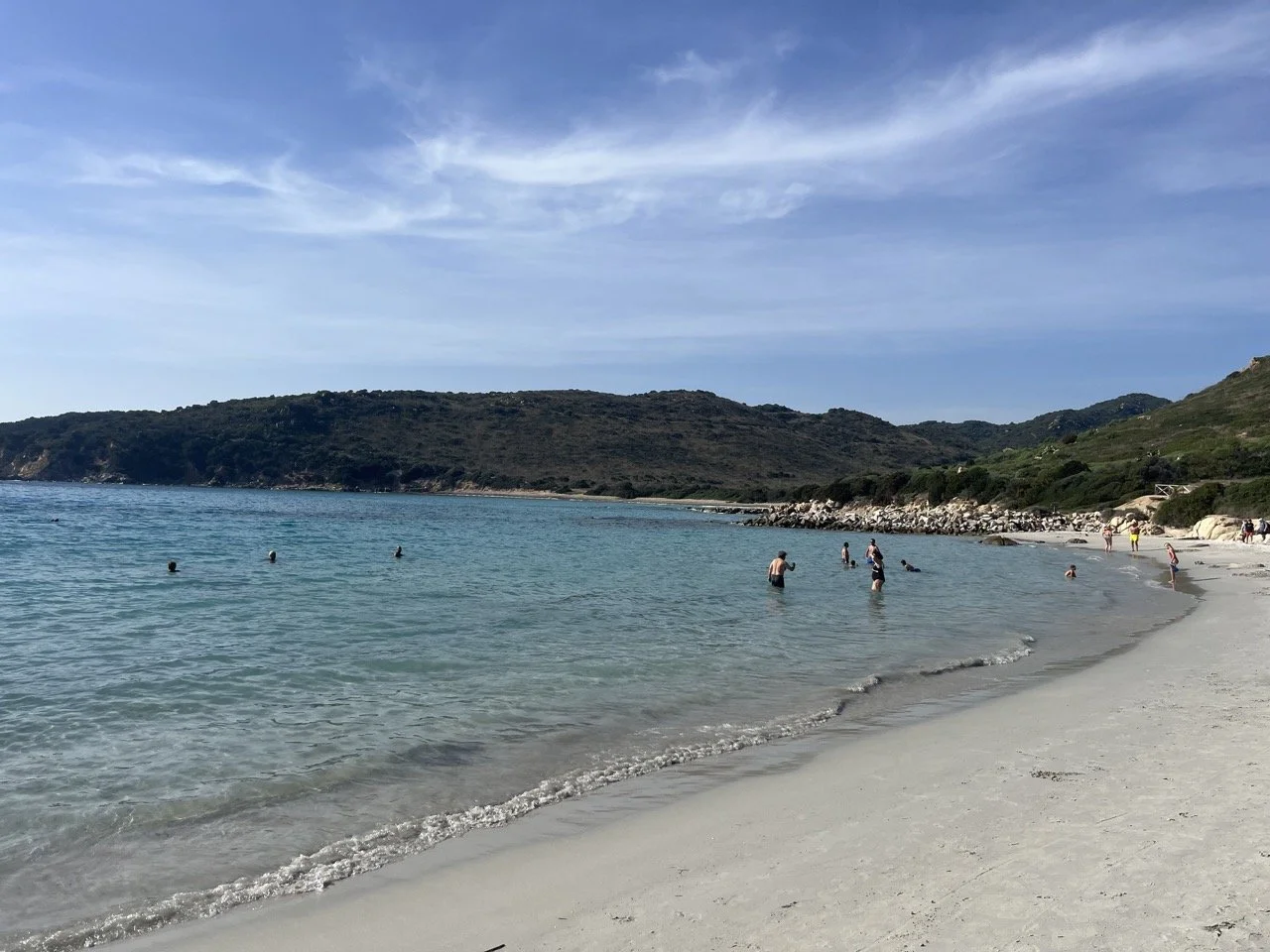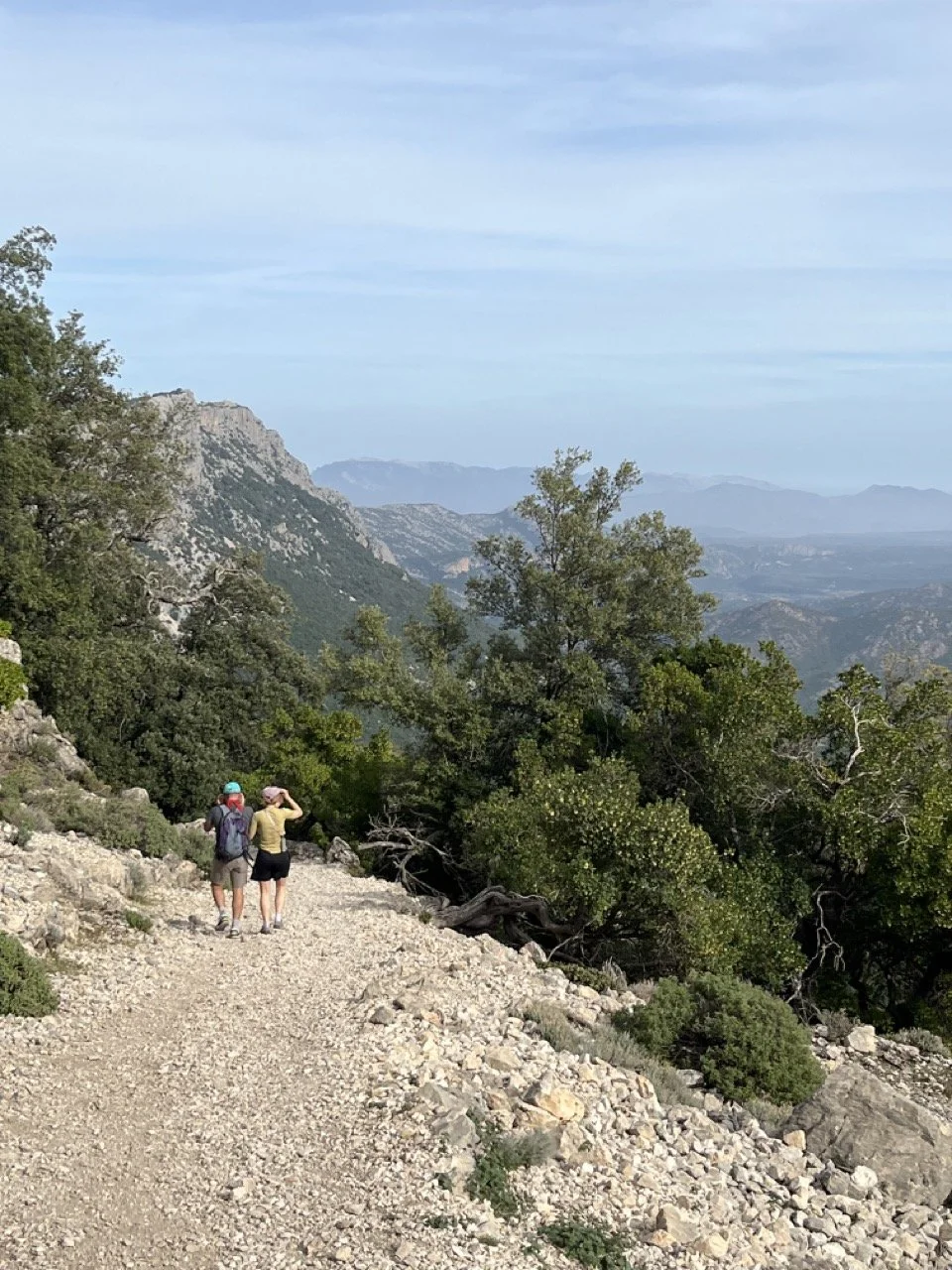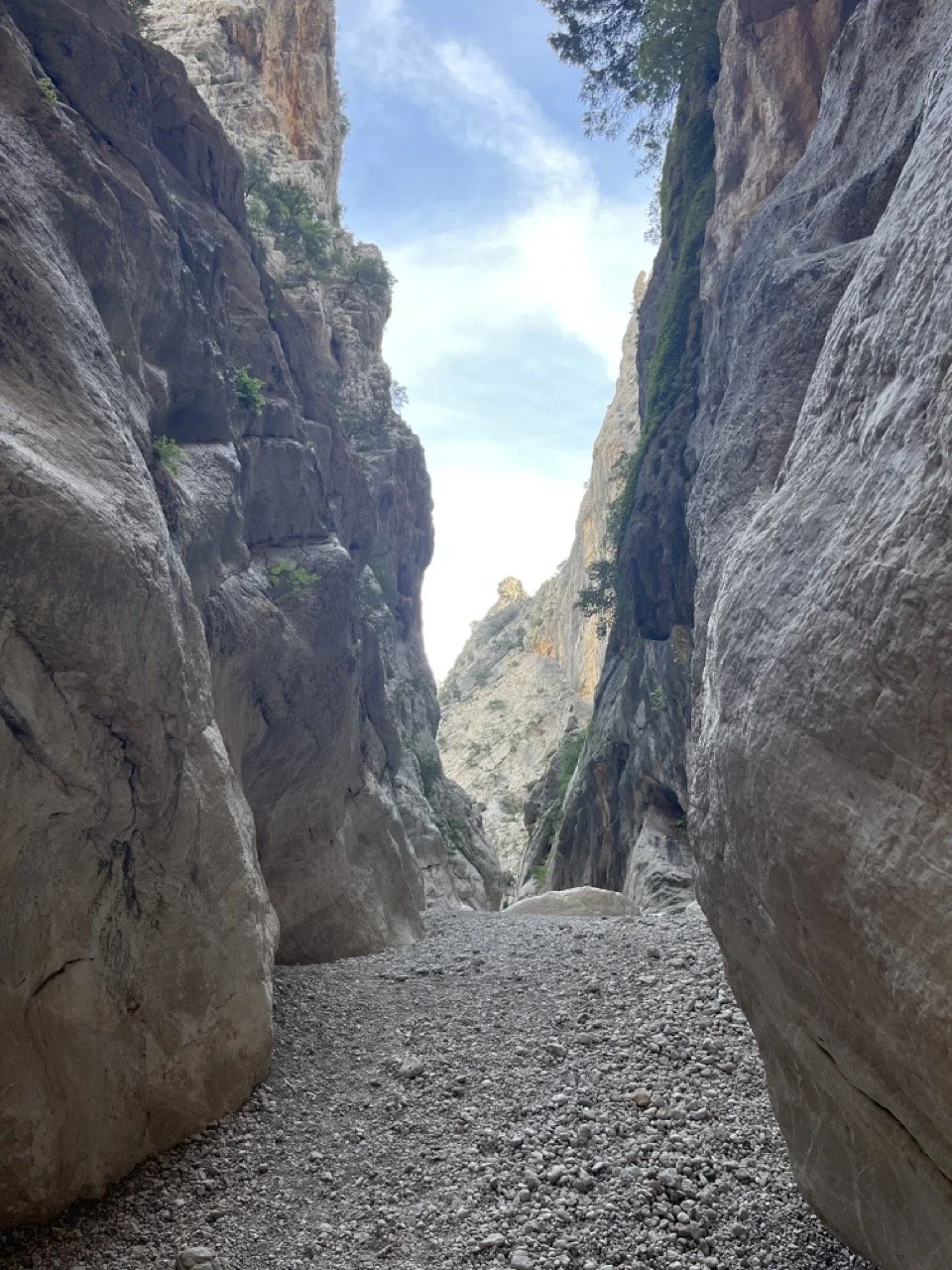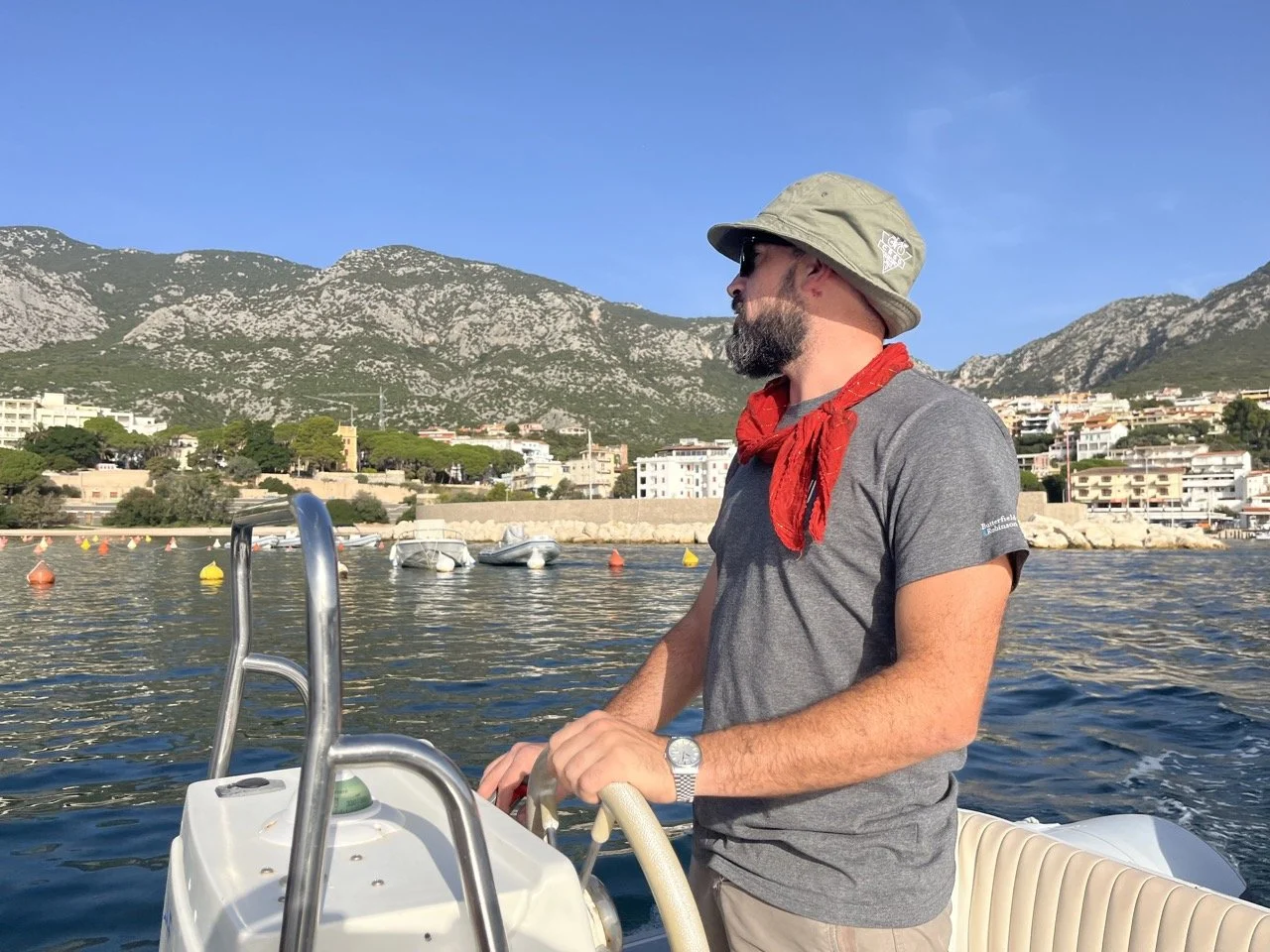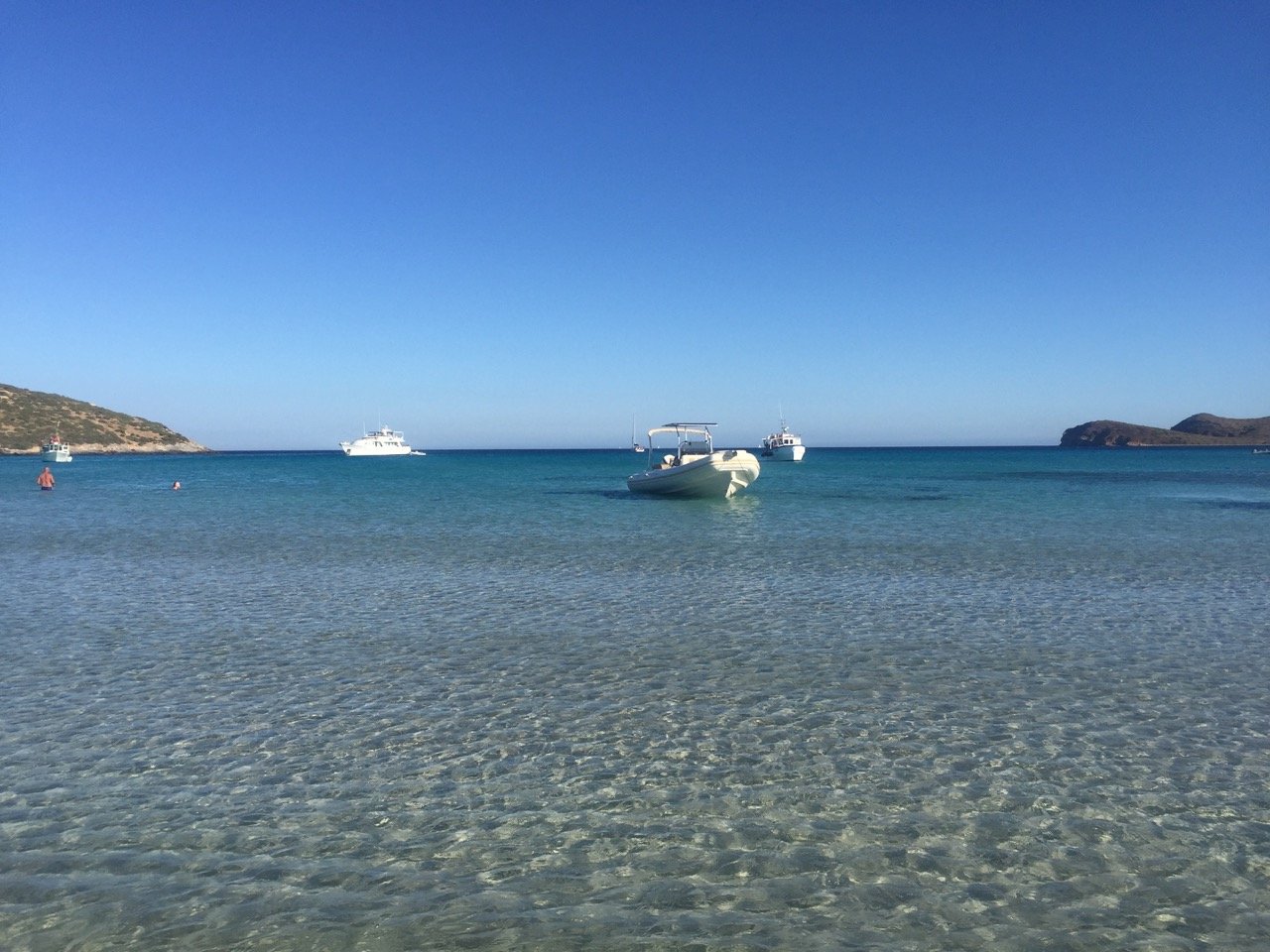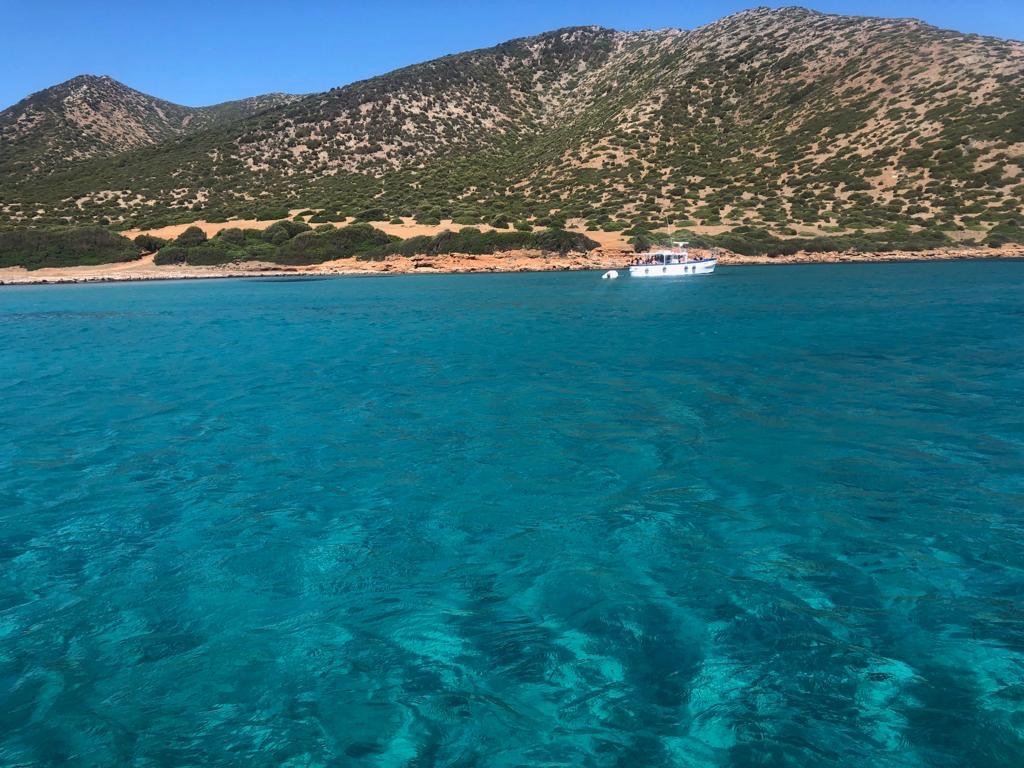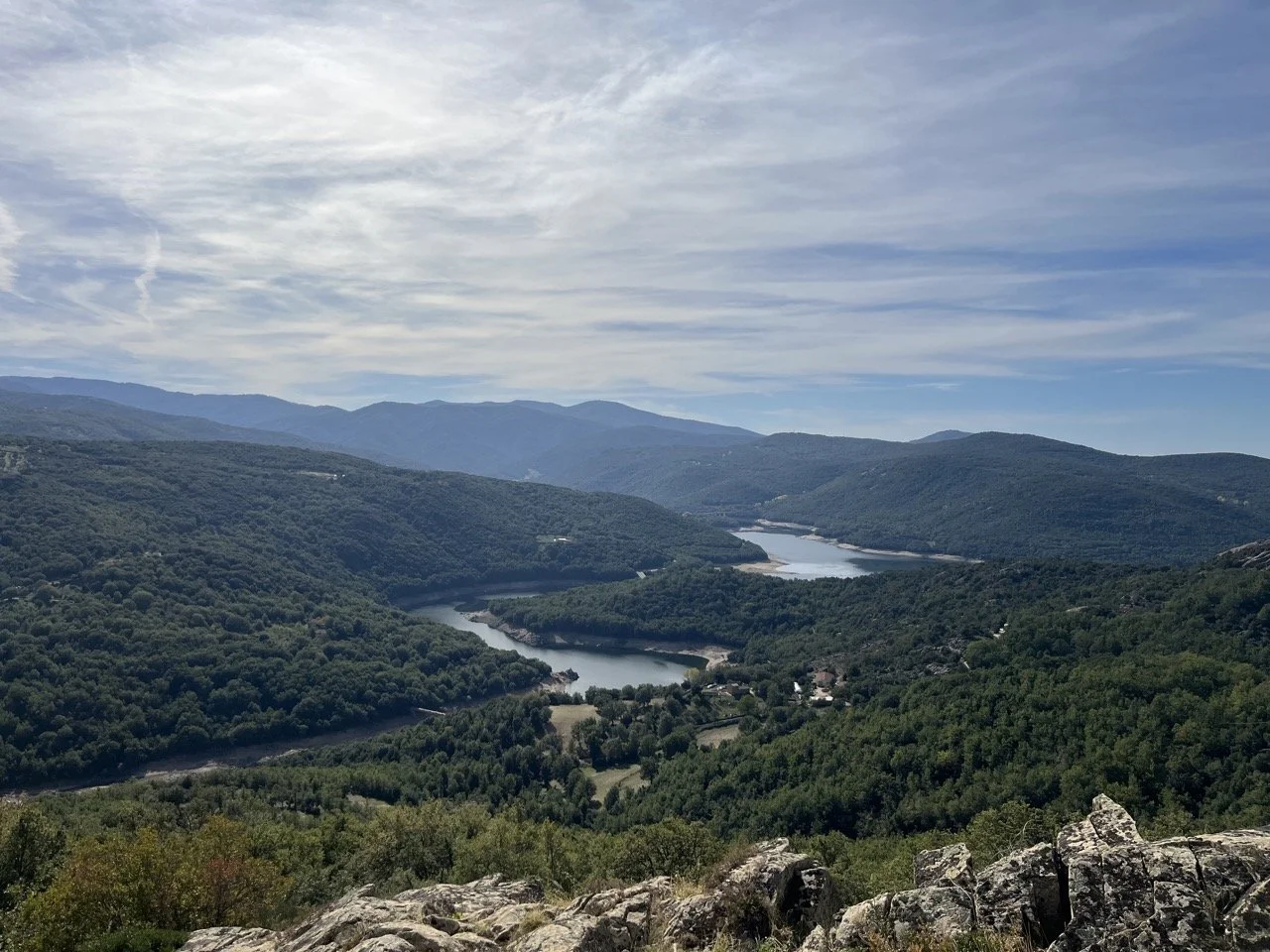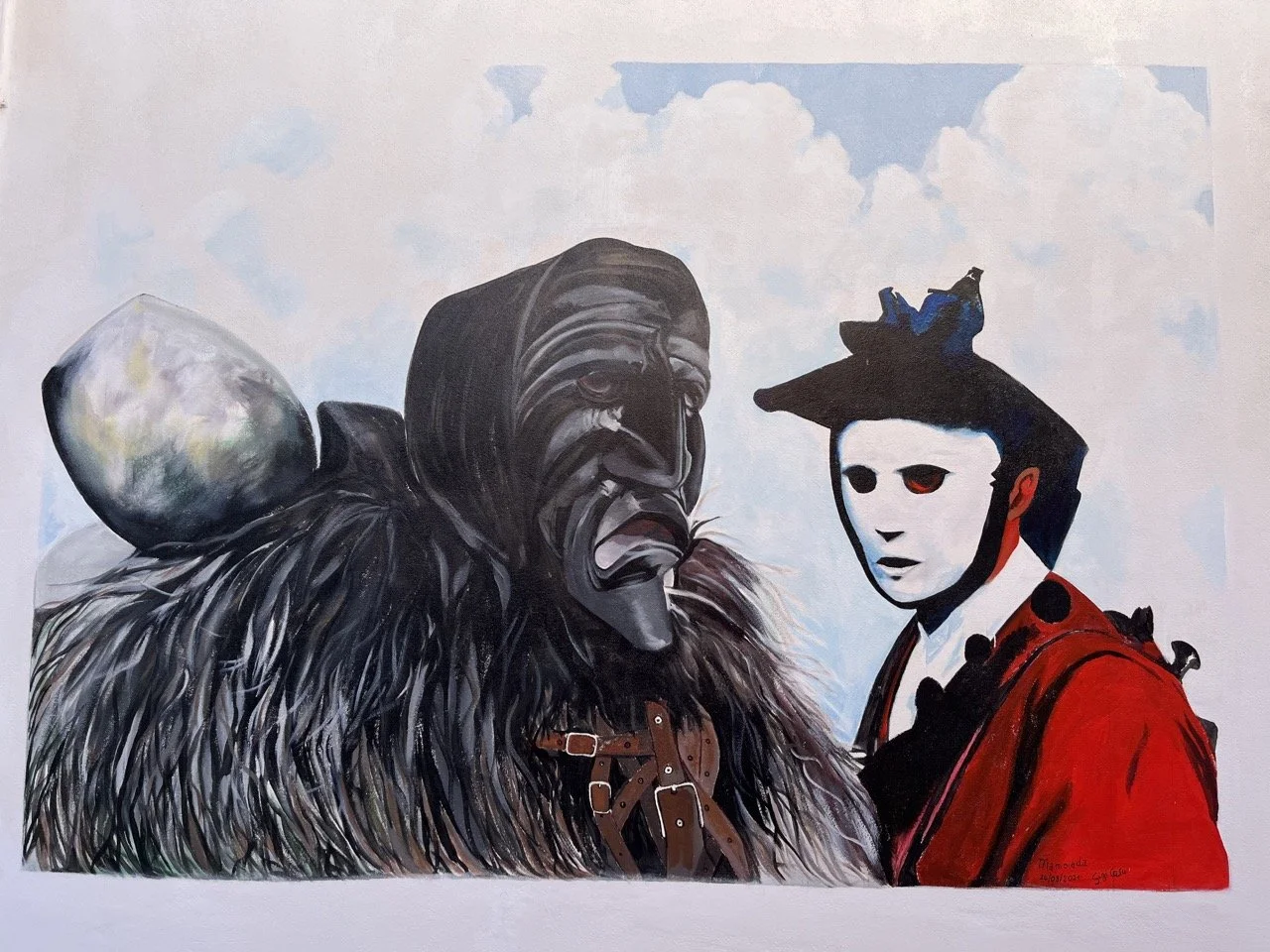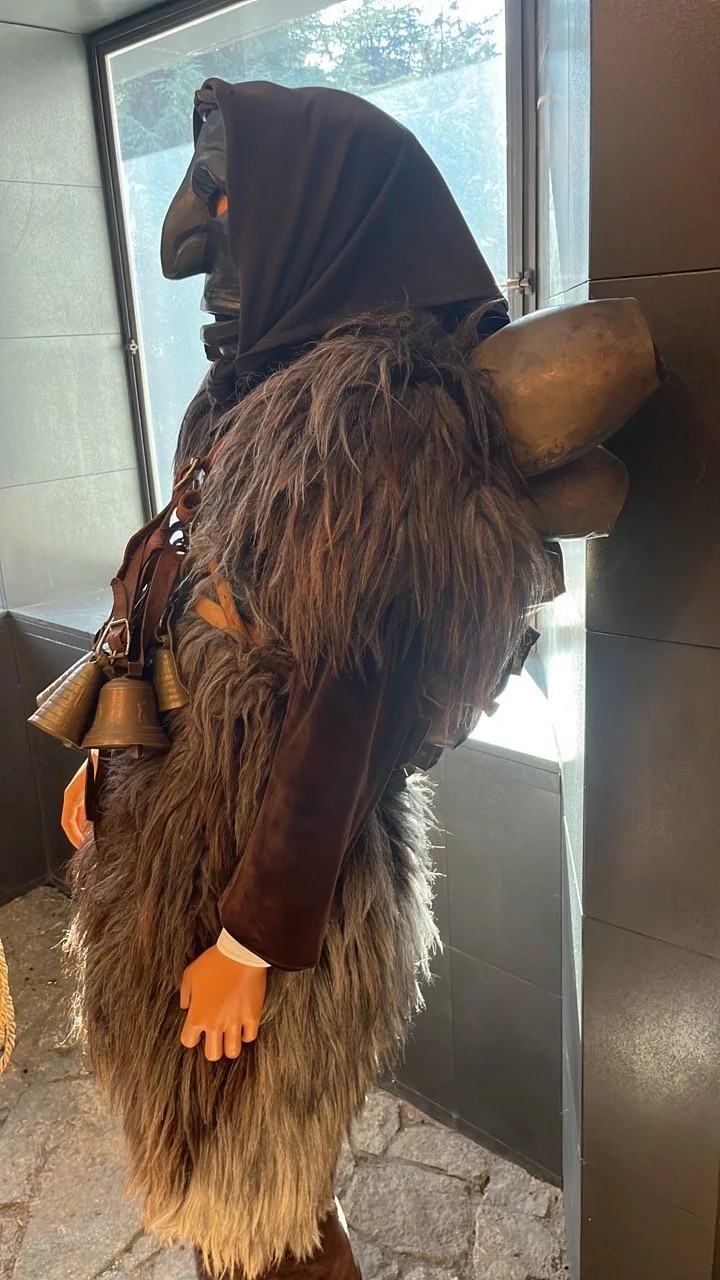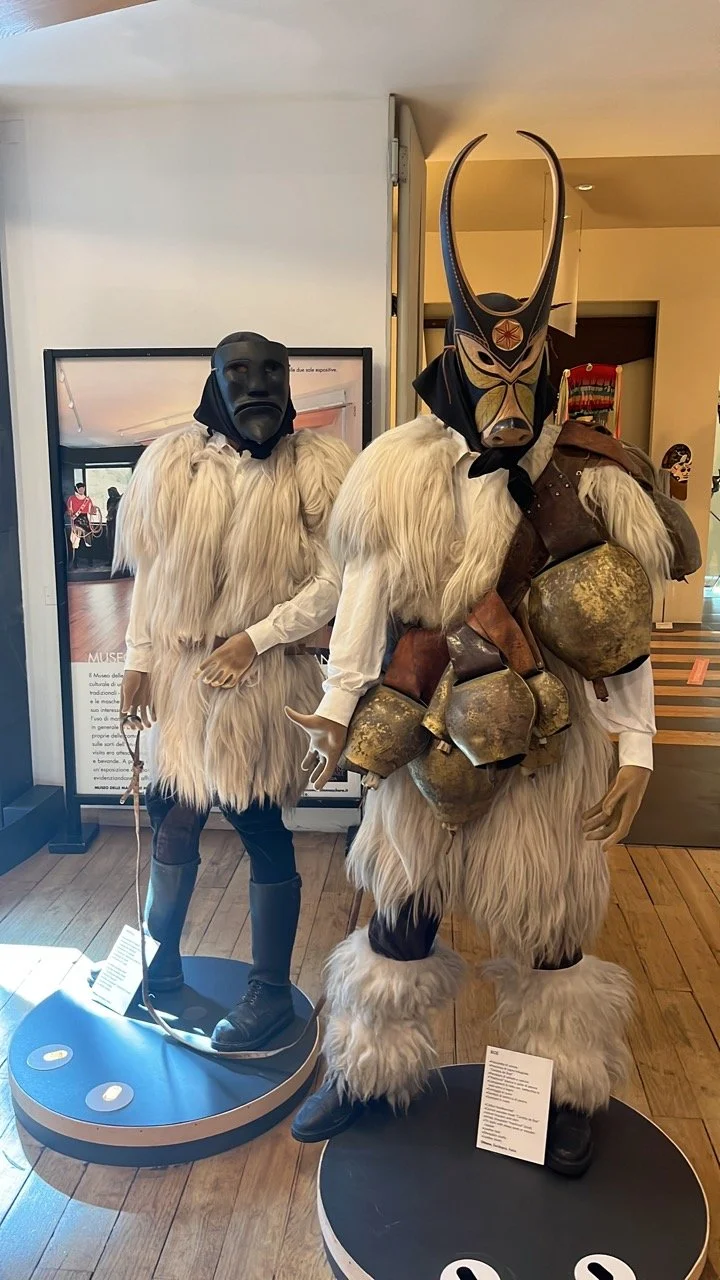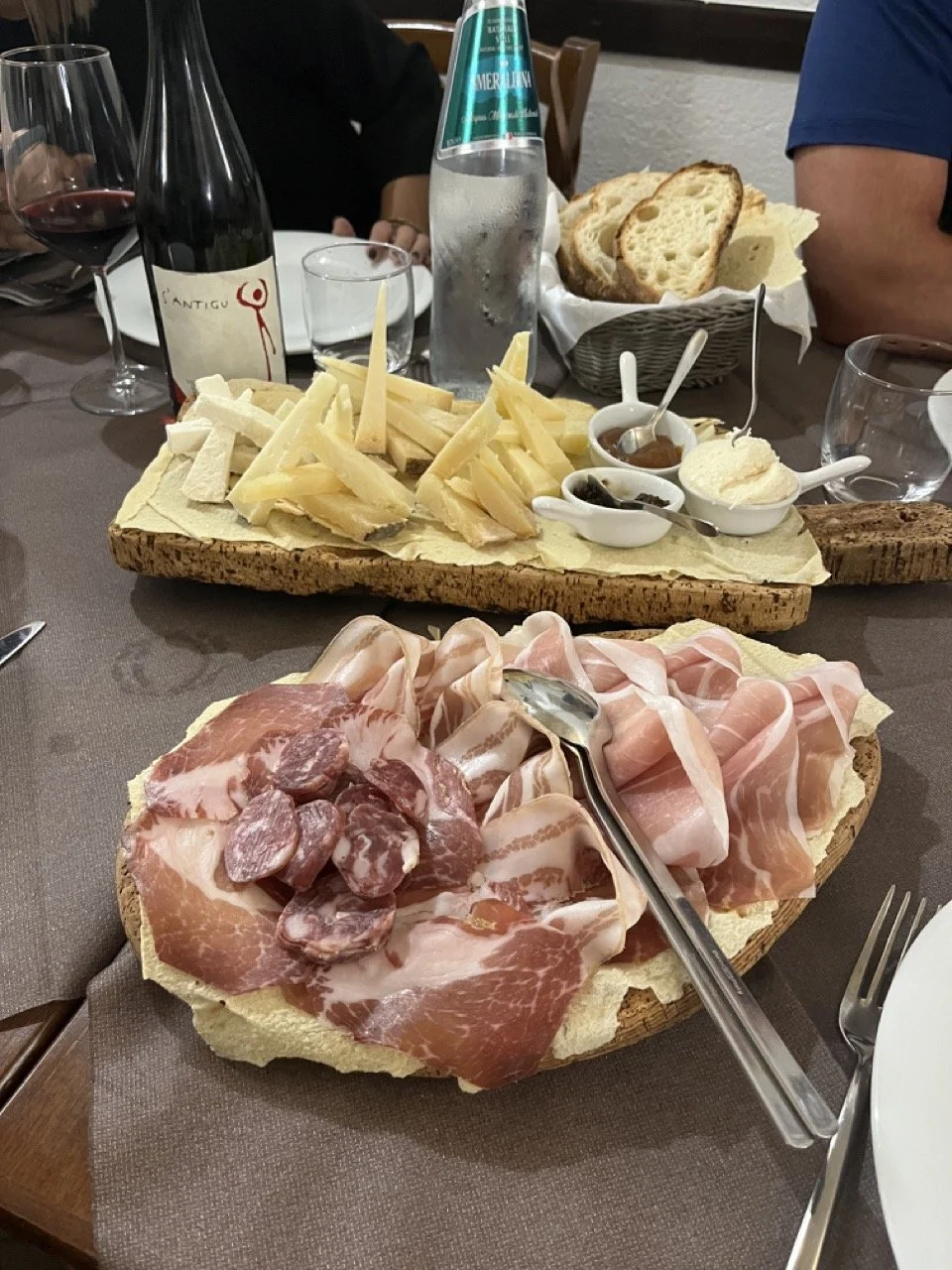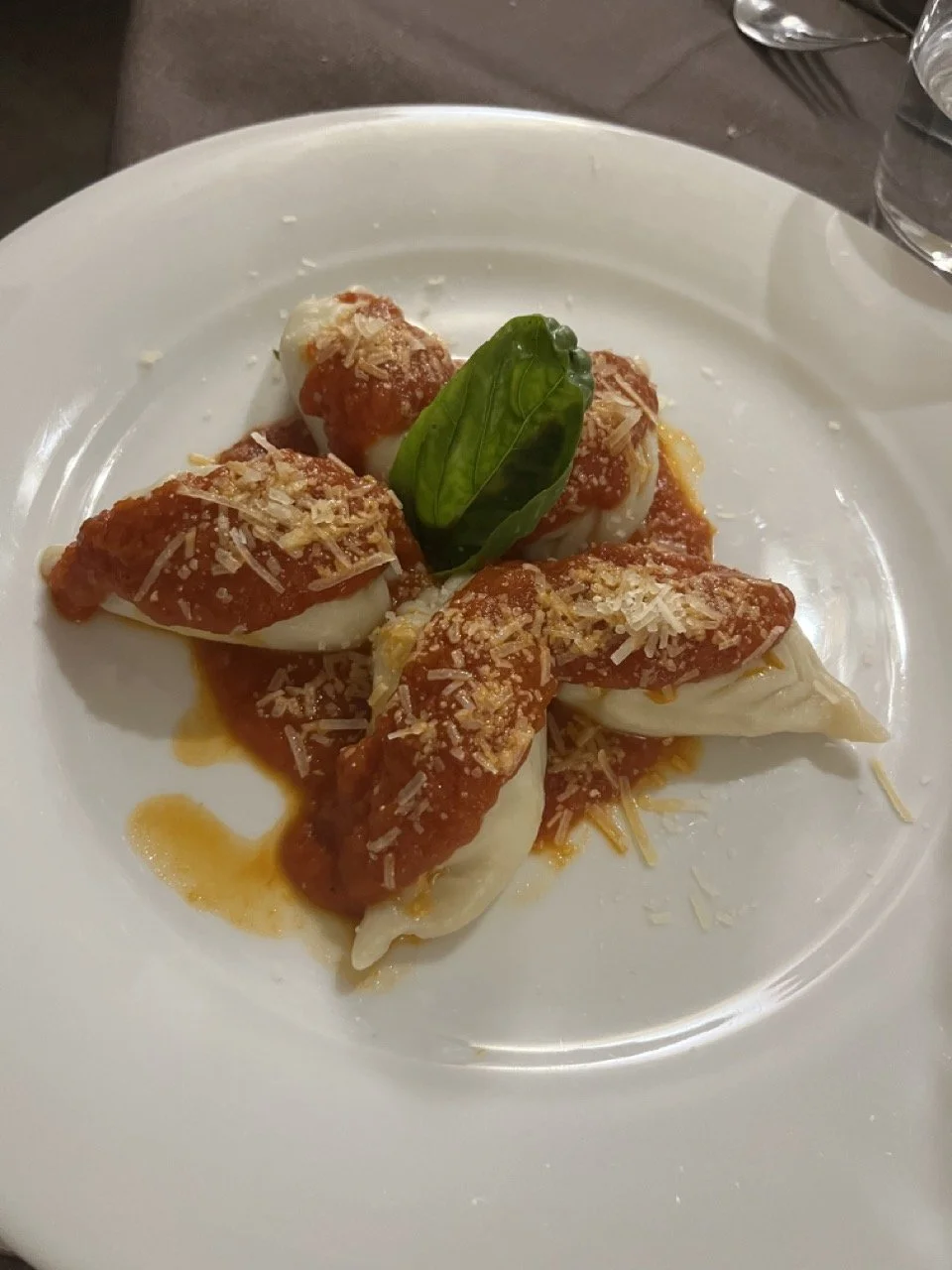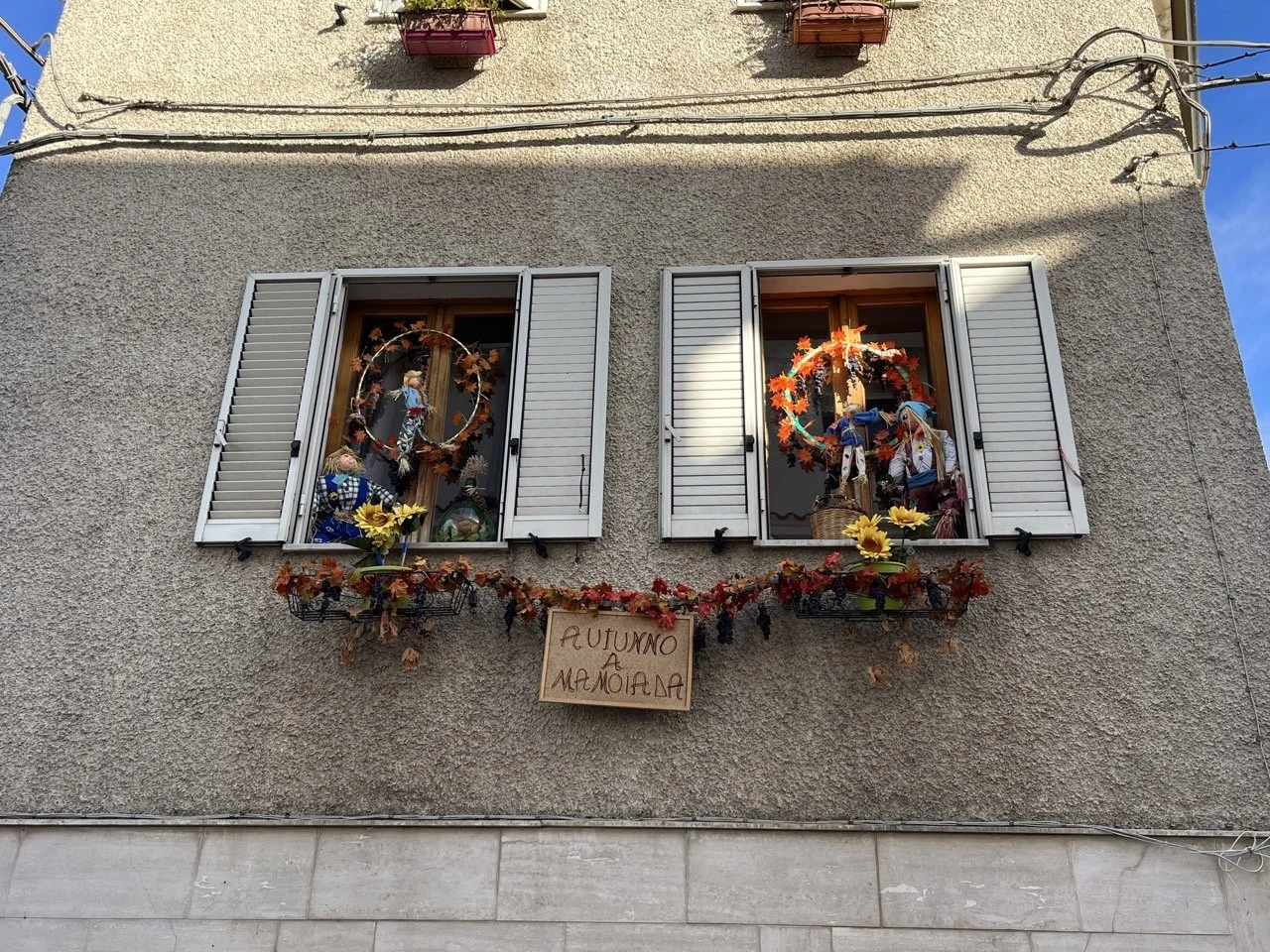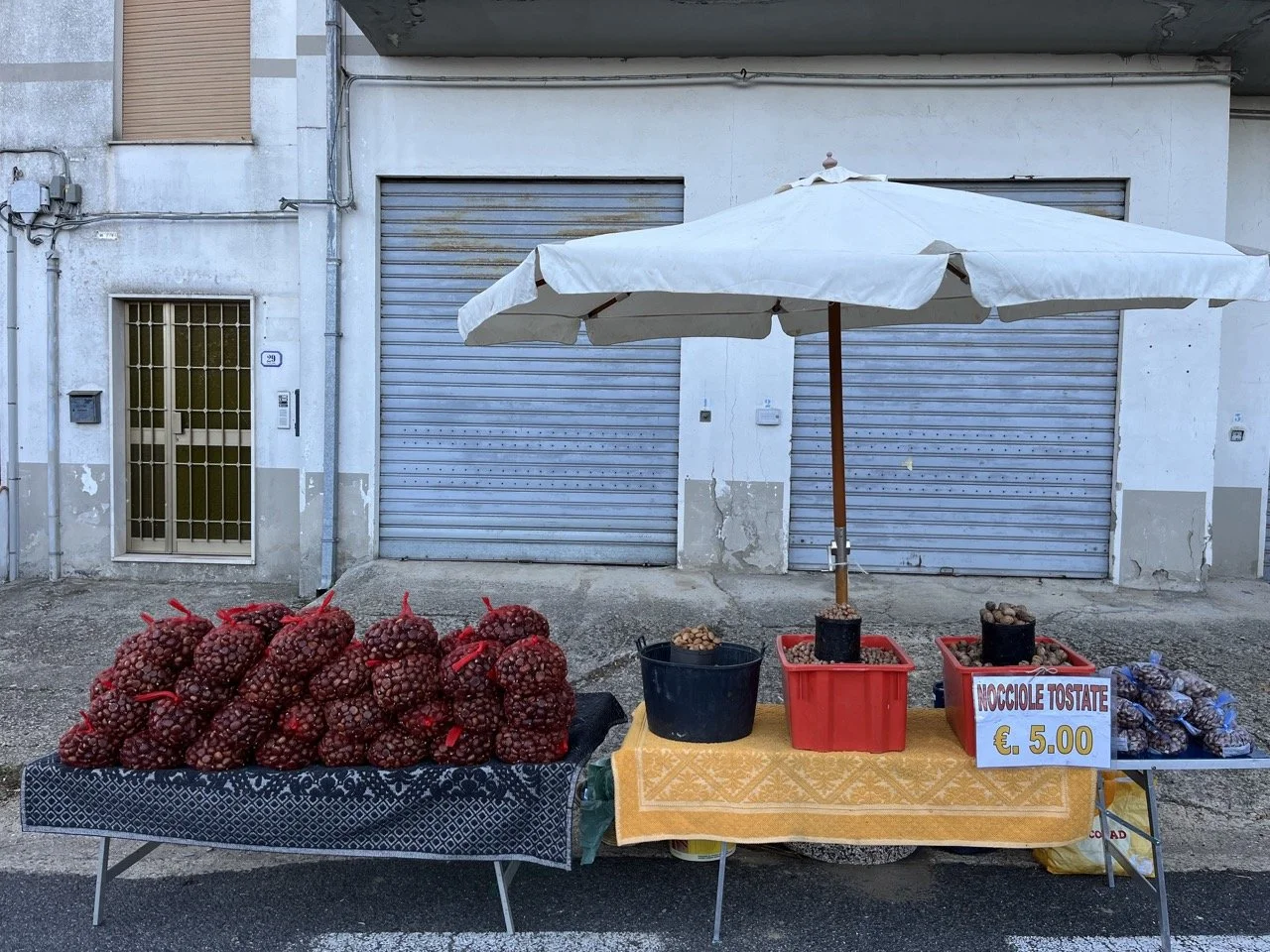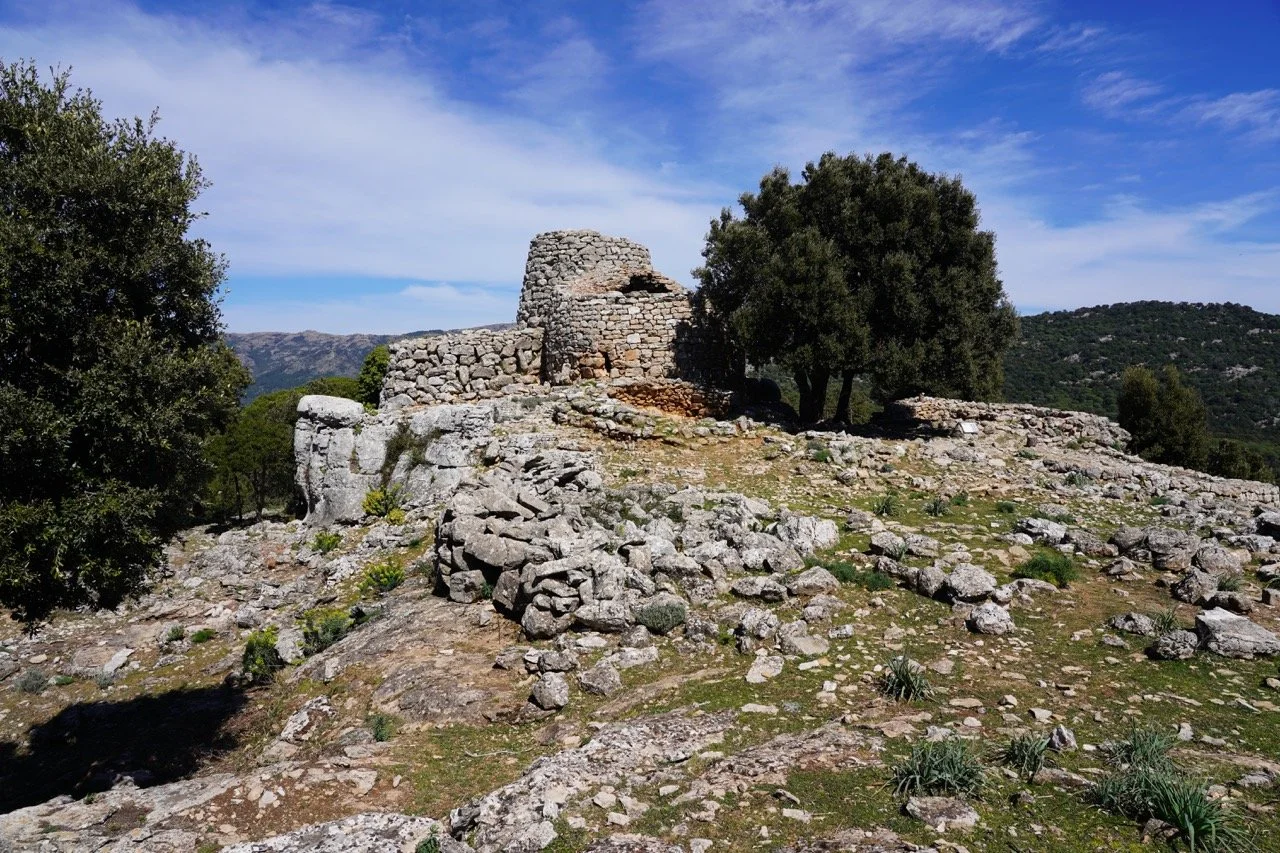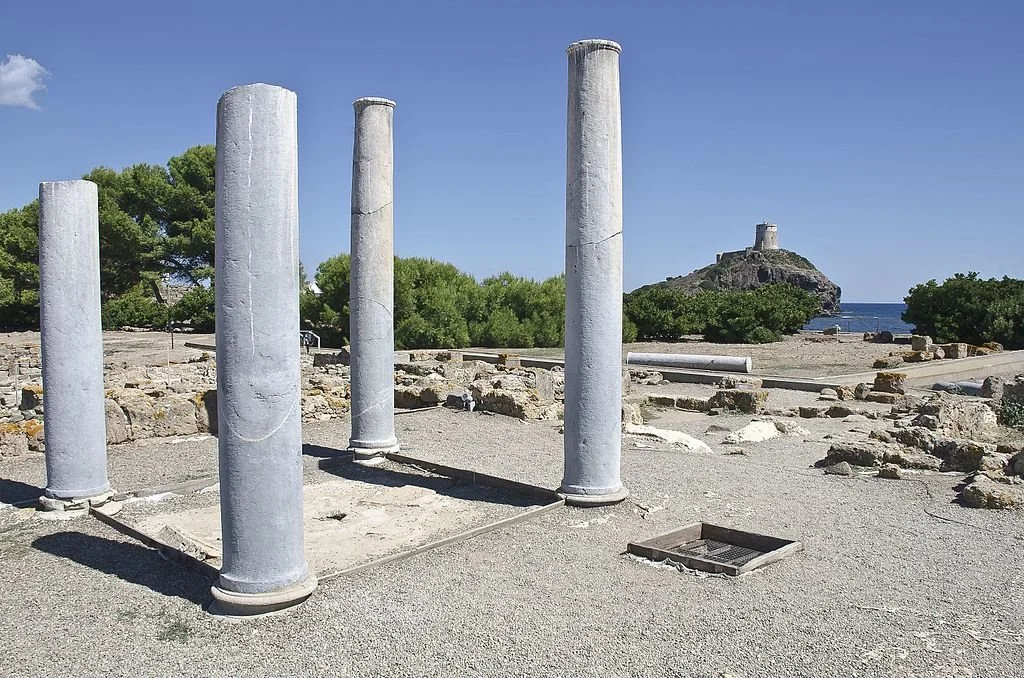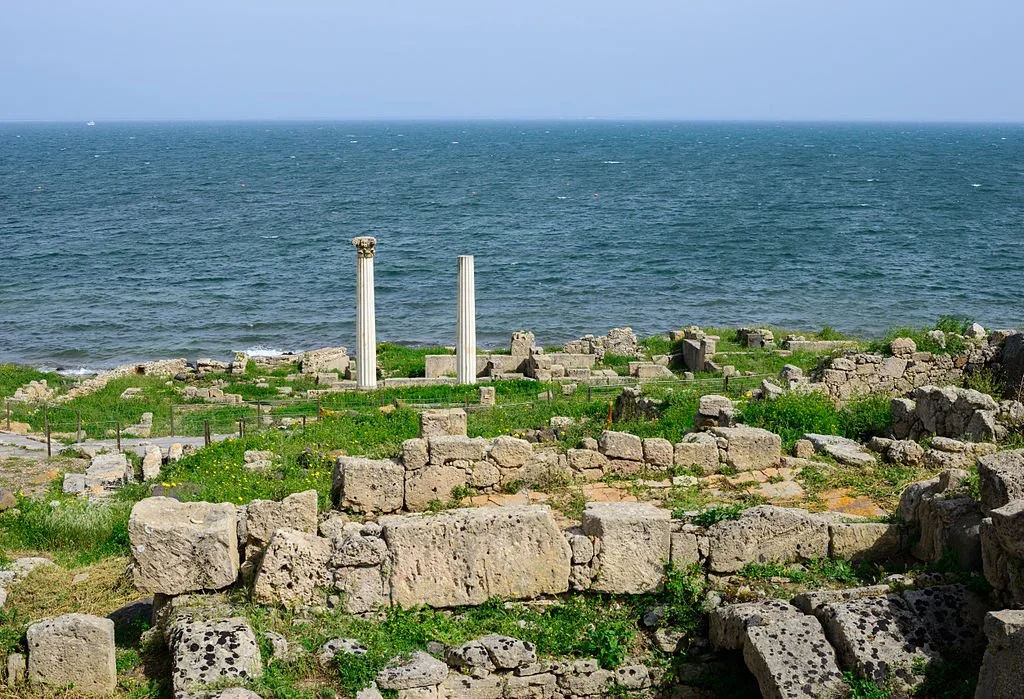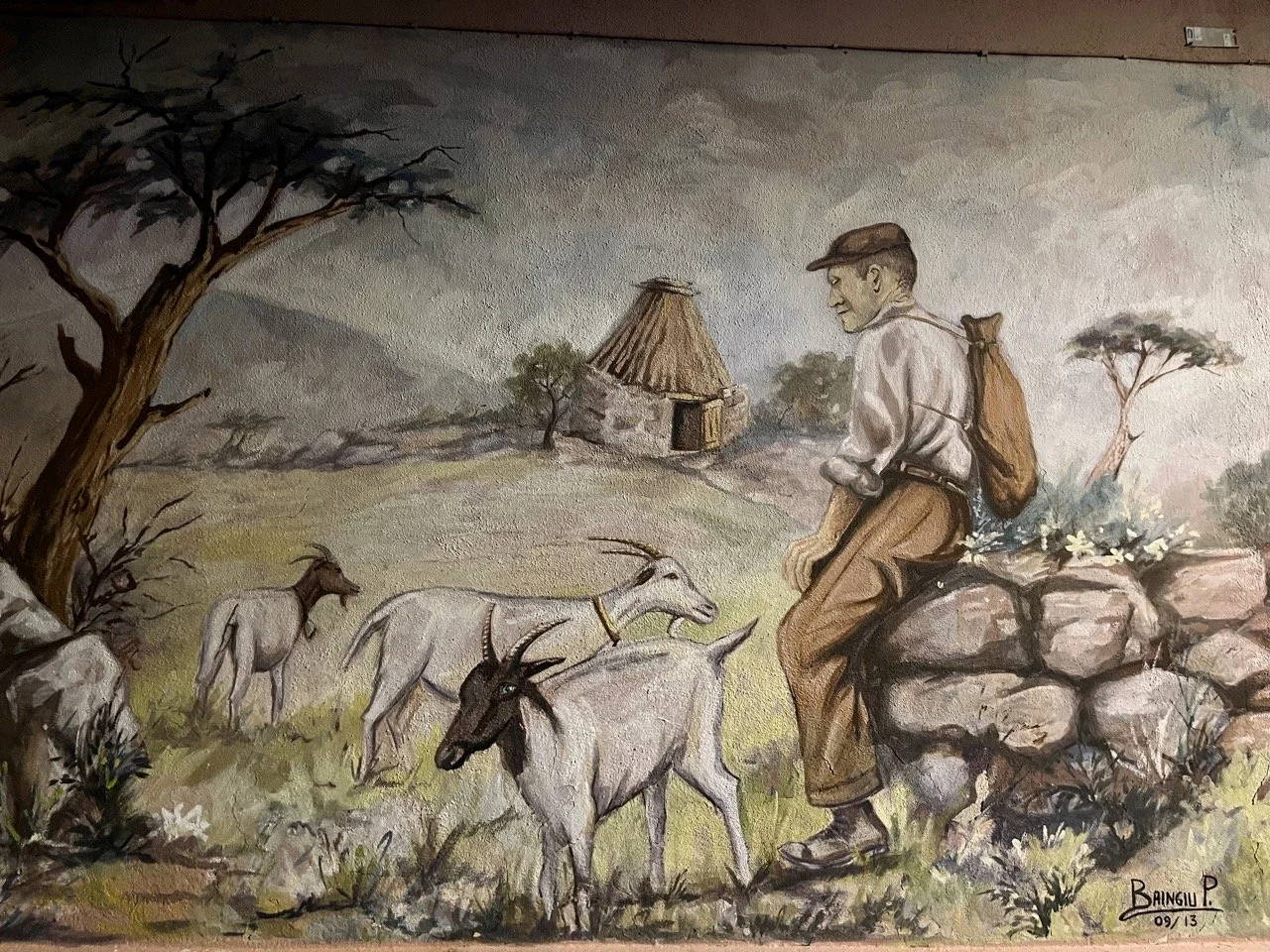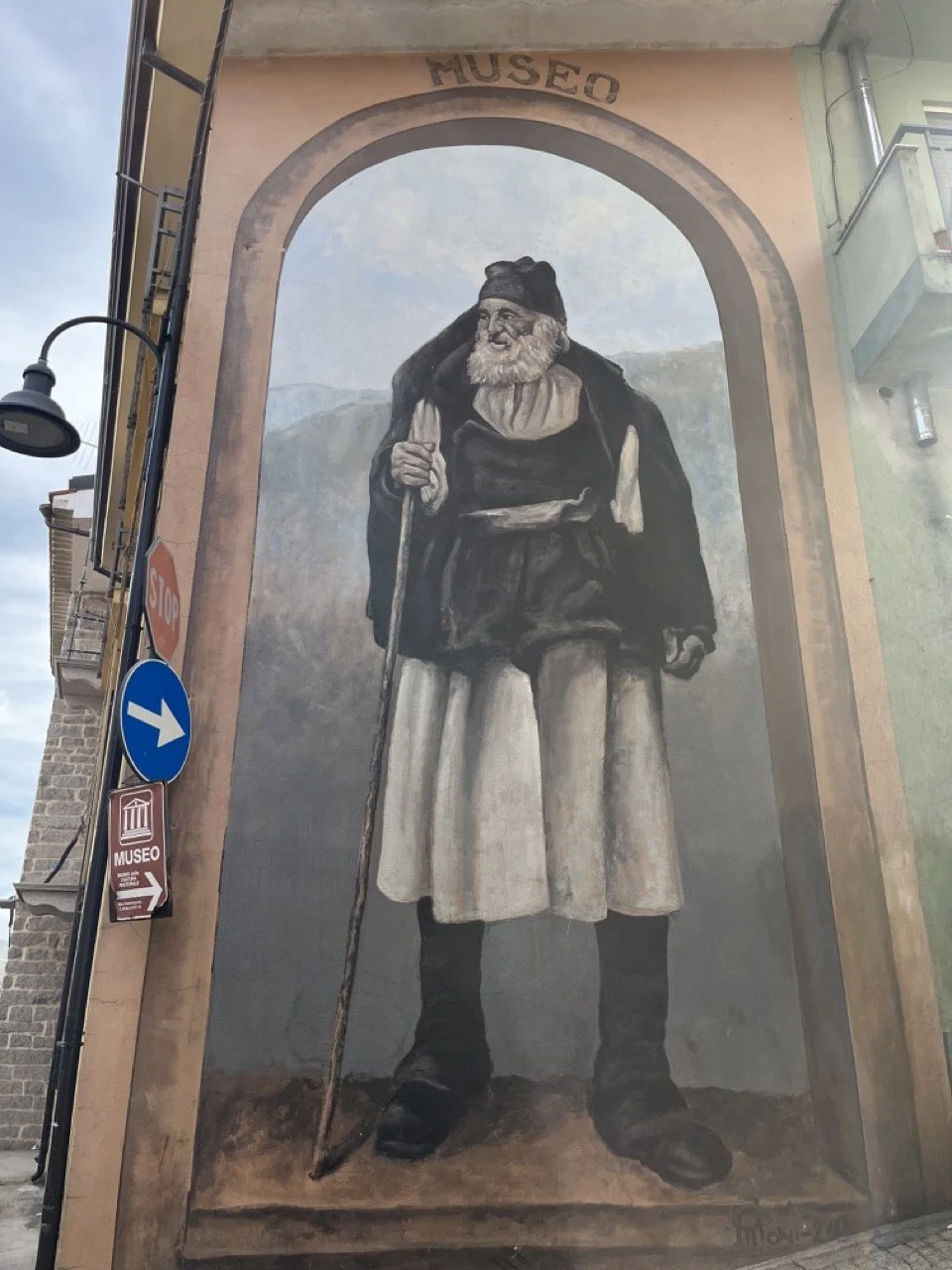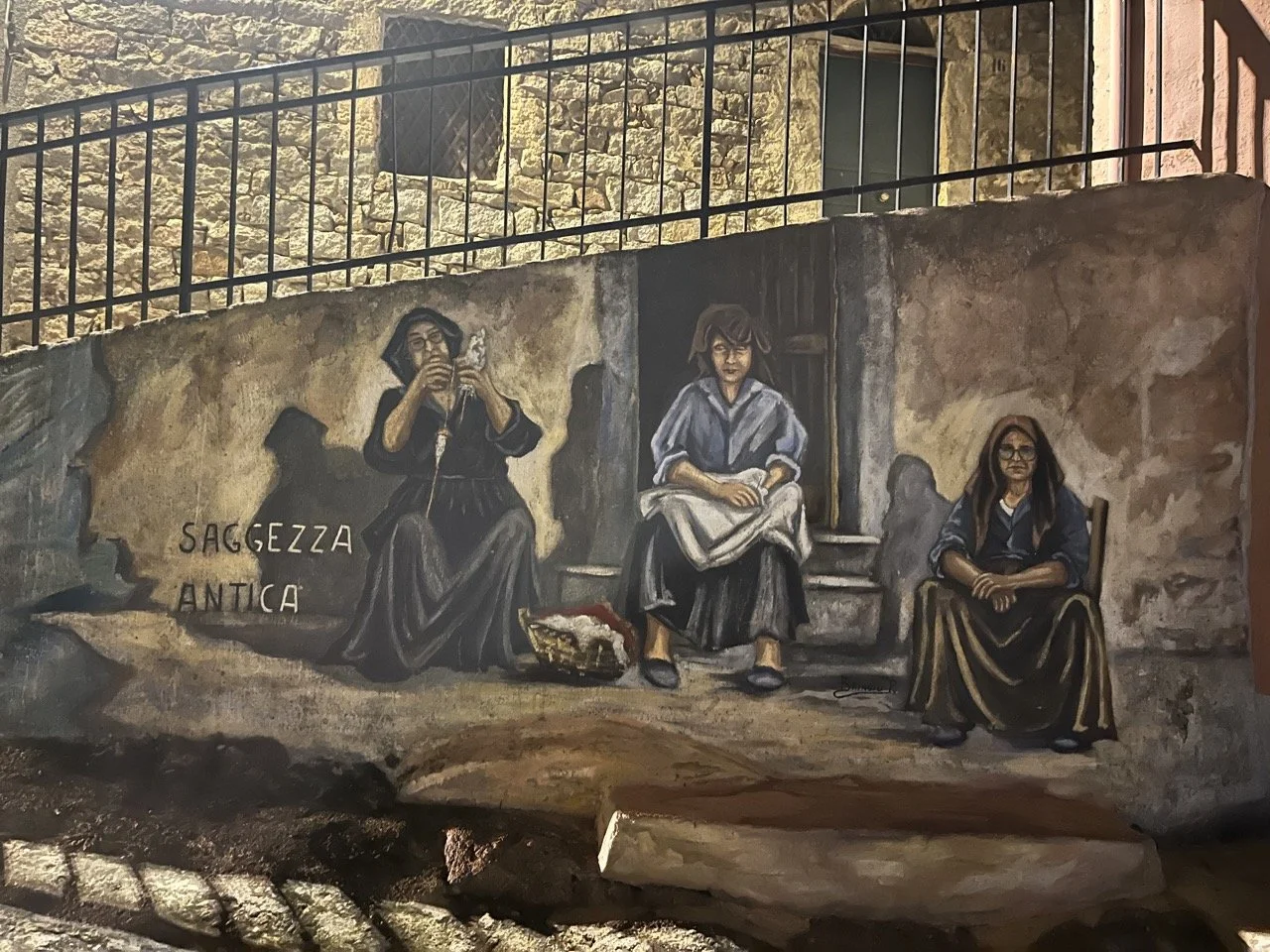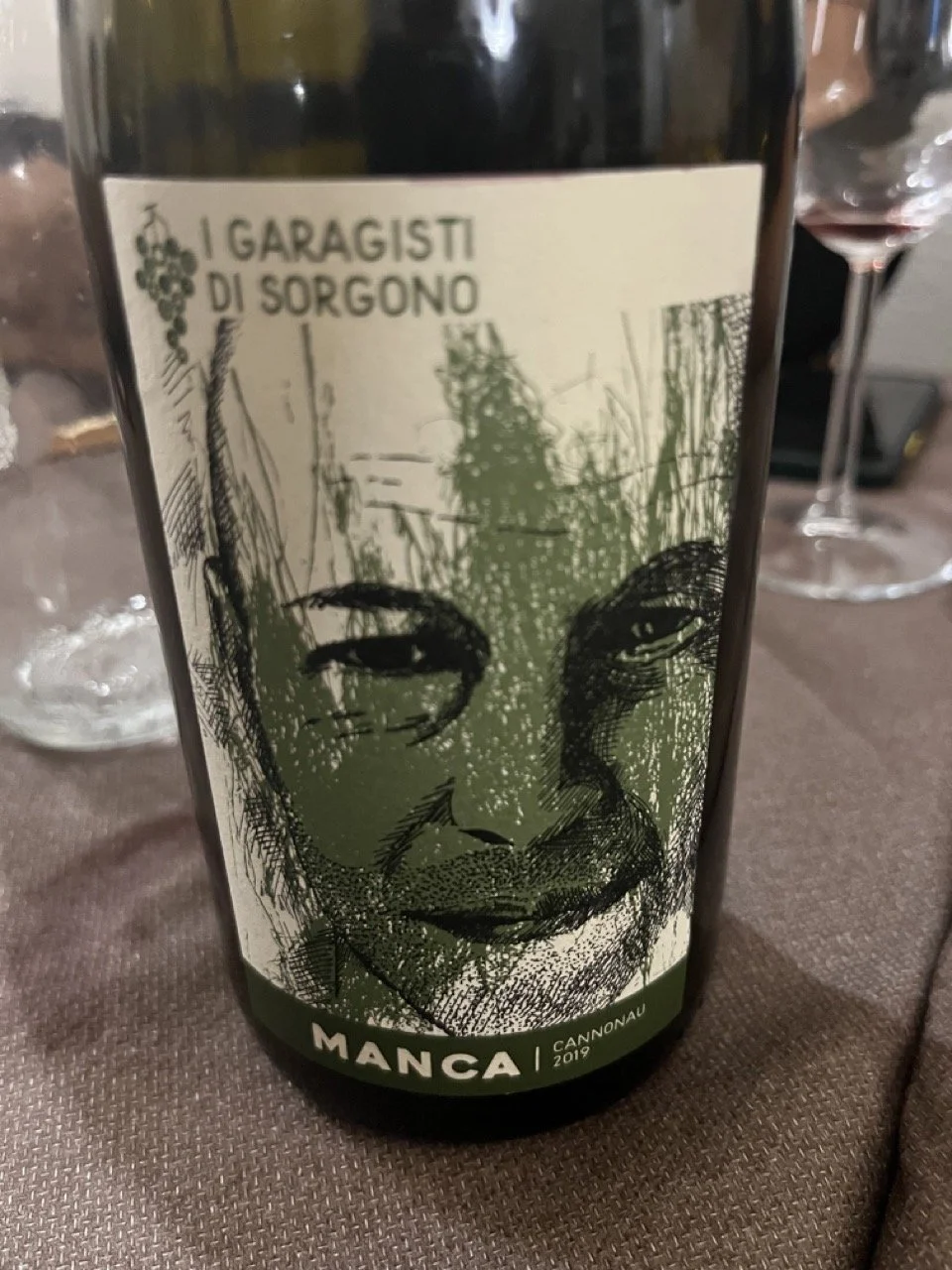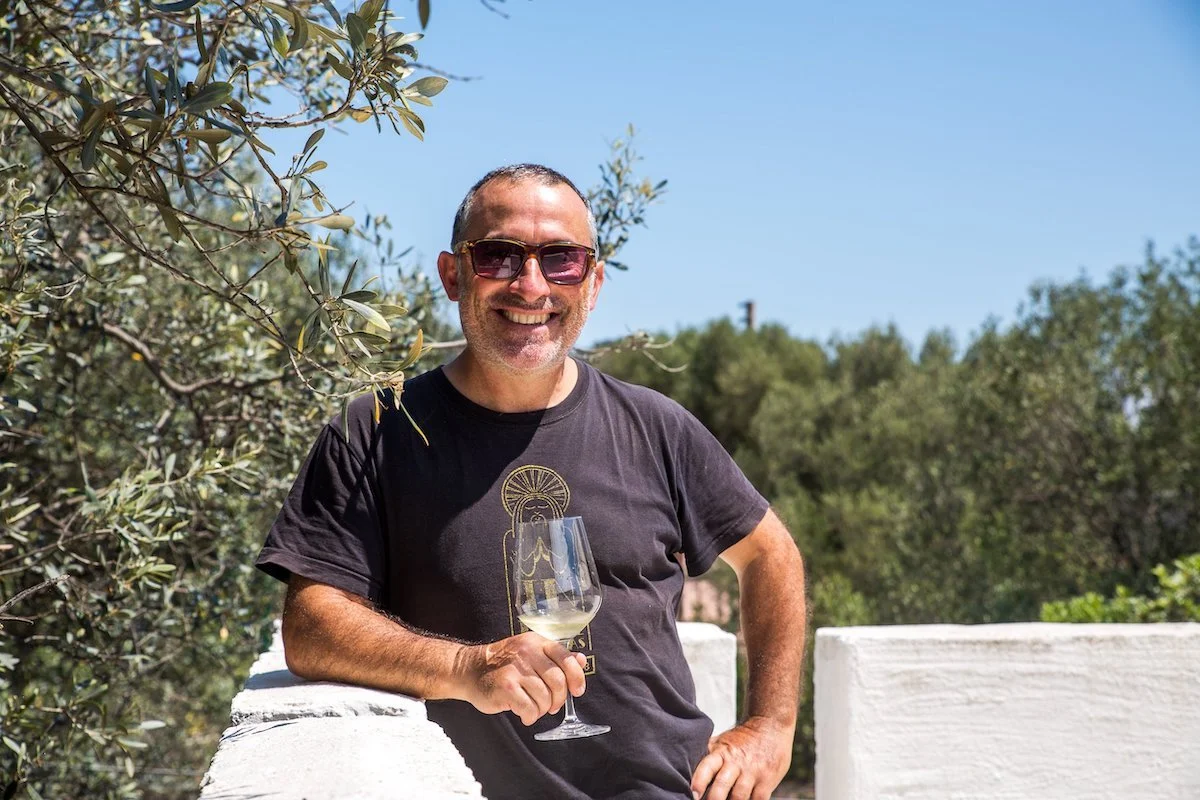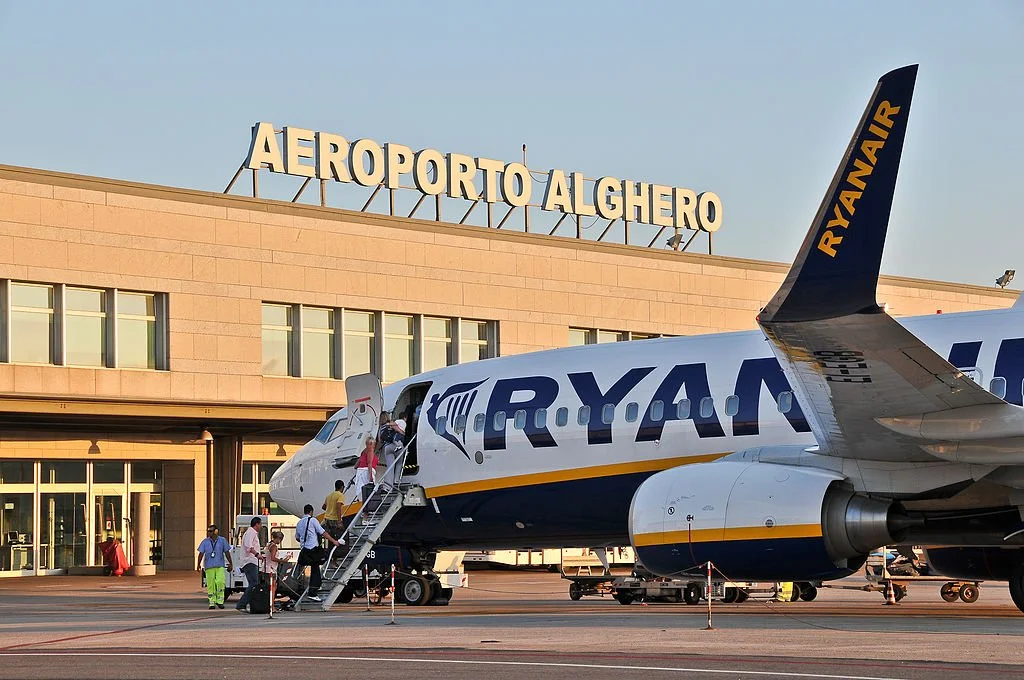30 Things to Know before Visiting Sardinia
Sardinia, a big island in the middle of the Mediterranean Sea, is one of Italy’s 20 administrative regions and the country’s second largest island after Sicily. It’s a little-known region that was almost entirely off the tourist map until about 20 years ago.
Even as tourism here has grown over the last 2 decades, until very recently it has been known almost exclusively to Italian tourists and some Europeans. And the vast majority of them have only one region of the island in mind - the Costa Smeralda.
The rest of the world’s loss has long been our gain! We Sardinians know the jewel of an island we live on and in an era of mass tourism we have been lucky to have it almost entirely to ourselves.
With the best beaches in the Mediterranean, exquisite food, untouched nature, and friendly local people, Sardinia offers everything that you could hope for in a Mediterranean vacation.
Since so little is known about the island to outsides, I’ve put together this list of tips and practical information that visitors should know before coming. I hope it’s helpful!
Affiliate disclosure: some of the links in this article are affiliate links. If you book using one of them, we’ll earn a small commission. All of our info is free to read and free of ads, so we appreciate it!
Table of Contents
Meet the author
Simone, the author of this guide (and all of our Sardinia articles), is a tour guide and trip planner covering his native island. He's been helping travelers plan immersive and authentic trips to Sardinia for over 20 years.
In addition to writing these fabulous guides and itineraries, he also offers Sardinia travel consultations for readers who want personalized help planning their trips.
1. Sardinia may be Italy, but we are Sardinian above all
Sardinia is a distinct nation all its own. Our history is completely unique and totally distinct from the rest of Italy.
Reports repeatedly state that more than 50% of the population identifies as feeling Sardinian and not Italian. They’re certainly not all 100% serious, but it still tells you something.
Our island is quite far from the Italian coastline and, beginning with the Romans, mainland Italy never really paid us much attention. As such, we’ve been left to our own devices for most of our history and developed very distinctive civilizations. The one that is least known, but probably with which we most identify is the prehistoric “Nuragic” civilization that existed for almost 1,000 years during the Bronze age.
We also have our own language, Sardo.
We are 1.6 millions Sardinian, spread over a big territory, so we have one of the lowest ratios of people per sq kilometer in all of Europe. And the vast majority of people live along the coast, resulting in an island with vast “silent” landscapes. This solitude and historical disconnect from the outside world has certainly affected our culture and character. While the rest of Italy has been packing people into tiny spaces for millennia, we have plenty of open space!
All of this and so much more is what makes Sardinia such a unique place, unlike anywhere else in Europe.
2. Asking for the best beaches is pointless - they’re all astonishing
I know that everyone wants a list of “the best beaches in Sardinia”, but it’s really so pointless to provide one.
When you’re here, every beach you’re at will be the best you’ve ever seen. Until, of course, you leave and go to the next one, which will instantly replace it on your list.
Sardinia has over 1,800 kms of coastline, and the terrain varies all over the island so you’ll find long sandy beaches, secret coves, idyllic bays, natural pools, imposing sand dunes, pink sand, white sand, golden sand, and on and on.
The beaches look so diverse because of the rocks and sand - ranging from glimmering rocky quartz beaches to deep gold sand ones and then volcanic grays. Then you of course also have beaches with limestone, multicolored pebbles, and basalt. And some beaches have no beach at all - you can just jump straight in from the cliffs!
But hey, I know you still want a list, so let me give you some of my favorites. I’ll divide them up by region:
South West: Chia, Tuerredda, Porto Pino, Cala Domestica
South East: Cala Giunco, Costa Rei, Sarrala, Cea
Centre West: Piscinas, Mari Ermi, S’Archittu
Centre East: All the coves of the Gulf of Orosei and Baunei coast, Bidderosa, La Caletta
North West: La Pelosa, Rena Majore, Li Cossi
North East: The whole La Maddalena Archipelago, Capriccioli, Cala Brandinchi, La Cinta
For more ideas, check out my guide to 13 great beaches in Sardinia.
Spiaggia di Tuerredda (Tuerredda beach)
3. English is spoken fairly widely (albeit with limited proficiency)
In general, younger people will tend to understand at least some English even in small villages in the countryside, so communication should never be impossible. That said, the level of English spoken in Sardinia can be rather limited, so you’ll certainly want a translator app. If you find yourself deep in the mountains or in the hinterland, expect for finding an English-speaker to be more difficult.
4. Sardinians speak Italian, but also “Sardo”
All Sardinians speak Italian as their native language, but many of us also speak our own language, Sardo (Sardinian). While still a Latin-based language, Sardinian is not a dialect of Italian – it is a distinct language.
Sardinian is more commonly spoken in the interior and in small towns and villages, and it is sadly rapidly declining in use. Nonetheless, it is still widely spoken.
5. People are friendly, but reserved
Austere is not the right word, but Sardinians are a bit different in character from other Italians.
When here, do not expect the joyful, boisterous, outgoing friendliness of southern Italians for example. We are friendly and welcoming, but in a much quieter and more reserved way.
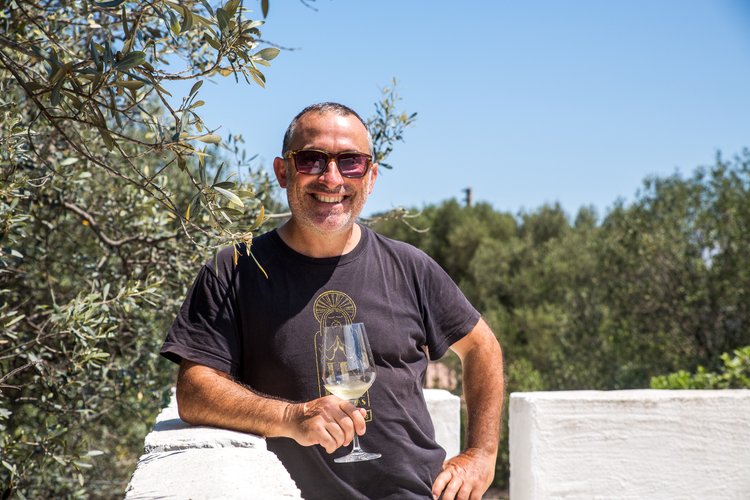

6. Sardinia is BIG
Sardinia is the second largest Island of the Med, with over 24,090 sq kms of land. There is almost 1,850 km of coastline and an an incredible variety of landscapes both along the coast and inland.
Of course we’re not talking about Australia size here, but still, it’s not a little island. To give you an idea, traveling from Santa Teresa di Gallura in the far north to the beaches of Chia in the far south is a route of 380+ km that will take you almost 5 hours.
The population of the island is 1.64 million, so while it is large in landmass, it is very sparsely populated.
7. Driving times can be deceiving
Along the coast driving times are fairly accurate, but you still don’t always have major roads and routes are winding, so getting between places can be much slower than you might expect.
When traveling inland this can be even more extreme and you may find that “quick” drives of 60 kms somehow take you 1.5 hours or more. The Ogliastra region is particularly notorious for slow travel times.
If this sounds like a hassle, it really isn’t! The drives are often magical and you’ll find yourself immersed in dramatic sceneries that change from rugged mountains to rolling hills covered in flowers, and then magnificent coastlines. Enjoy the ride!
A winding mountain road near to Baunei
8. You really need to rent a car
When visiting Sardinia, you absolutely need to have a car. You simply cannot get around the island efficiently using public transport. And even more, if you rely on public buses, you won’t be able to get to many of the places that make Sardinia so special: our fabulous beaches and dramatic wild places.
Most people coming to Sardinia want to beach hop (and rightly so) and this is impossible without a car. While you have public transport options from cities like Alghero and Cagliari that will get you to some beaches, you’ll be limited to the most popular ones and you won’t be able to stop at your leisure at all those inviting secret coves and bays.
When renting a car, know that our airports are very close to their respective city centers, usually less than 15 minutes away. Since there are good bus connections between the airport and the centers, I always recommend renting your car from a local agency based outside of the airport. It will save you a fortune and you won’t lose any time doing it.
With local agencies, if you’re planning on getting the full coverage insurance from them, pay it directly at the counter instead of online. It’s usually much cheaper, which most people don’t expect to be the case.
To check prices and book, I recommend using DiscoverCars. It’s a car rental website that includes offerings from all the major international rental companies as well as lots of smaller local agencies, which often have much better pricing. You can often find great deals.
I use it myself and have always had good experiences.
9. You can’t see the whole island in just one week
I’ve already said it, but it bears repeating; Sardinia is big! You simply cannot see the entire island in one week. To visit Sardinia, you need a minimum of 10 days. If you plan on attempting to see the entire island, even that will be rushed, and two weeks is really a more reasonable amount of time if you want to do things pleasantly and somewhat leisurely. If you visit with less than 10 days, focus on just one or two areas of the island.
Sardinia is easily divided into 6 area – Northeast (Olbia/Costa Smeralda), Northwest (Alghero), Center East (Orosei/Barbagia/Arbatax), Center West (Oristano/Sinis Peninsula), Southeast (Costa Rei/Villasimius), Southwest (Iglesias/Teulada). Cagliari sits somewhere between SE and SW.
If you have one week in Sardinia, your best bet is to choose two of these areas as bases and then do day trips from them. Alternatively, you could choose 4 different areas, but that means packing and unpacking your bag each night and some long drives at the end of a few days.
For some inspiration, check out my 7-day southwest Sardinia itinerary.
10. High season runs from late June to early September, but you can swim through November
High season in Sardinia is of course the summer months. Beginning in the second half of June and running all the way through September 15th, the island is at it’s busiest. The absolute peak period is the 2nd and 3rd week of August when everyone, including basically all of Italy, is on their summer break. This period is known as “Ferragosto”.
But because the weather in Sardinia is good for so much of the year, you can usually start swimming in May and continue all the way through early November (and later if you’re in the south of the island).
Bari Sardo beach empty in October
Tuerredda beach practically empty in October

Connect with Simone, our Cagliari-based local expert, for help perfecting your itinerary, answers to all your travel questions, and fabulous local tips!
11. It’s fairly expensive (unless you head inland)
There’s no two ways about it, Sardinia is not cheap. Prices in major beach destinations like the Costa Smeralda can be downright astronomical and from June to August prices along most of the touristed coastline will invariably skyrocket. You should expect to pay similar prices for accommodation, meals, and activities/experiences as you would in northern Italy’s tourist hot spots.
However, that’s not to say that you can’t find bargains in Sardinia. Most tourists head to the same places, driving up the costs there, while entire stretches of coast receive barely any visitors. If you get creative with your planning and stay a bit further away from the most well-known beaches, you can find very good prices even in the height of high season.
And for legitimately cheap prices, you just need to head into the interior. In Sardinia’s mountains and inland areas you can find terrific prices at great family-run agriturismos, fabulous local restaurants, and excellent inexpensive wineries.
12. Tipping is appreciated, but not expected
Tipping in Sardinia, like in the rest of Italy, is not expected (for most things).
As most foreign visitors to Sardinia have traditionally been other Europeans (German, French, Dutch, Scandinavians, etc.) who also don’t tip, tipping culture is still not really a thing. However, as more American tourists start to come, tips are beginning to become more common.
In general, at restaurants it is uncommon for Sardinians to tip. For services like transfers and tours, tipping would be slightly more common, though still not standard.
That said, as always, if you received exceptionally good service, a tip is always appreciated.
13. Cagliari is worth visiting
Cagliari, our capital city, has finally seen a bit of a tourism boom in recent years. While Sardinia has been quite popular as a beach destination for a few decades, most visitors tended to arrive to Cagliari’s airport and then depart straightaway for other parts of the island. This is a shame.
Not spending at least a day or two in Cagliari is a mistake as the city has a lot to offer. It is also very close to some of Sardinia’s best beaches (some of which are even reachable by bus) and it offers a good range of reasonably-priced accommodation options. Cagliari is an excellent base from which to explore the southern coast of the island.
Central Cagliari is divided into four old districts: Castello, Stampace, Marina, and Villanova.
Castello – This is the “castle” district located at the very top of town. You have lovely narrow, cobbled streets, remnants of the city’s ancient defensive structures, and fabulous lookout points.
Marina – The Marina is the waterfront district right in front of our port. This area is a melting pot of immigrants from Bengladesh, India, and North and West Africa, and tourists from all over the world. The wonderful combination of people makes it a lively, colorful, and very interesting place to visit.
Stampace – Stampace is a district on the western side of town that is home to a majestic Roman Amphitheater, the lovely Botanical gardens, and the Punic-era necropolis of Tuvixeddu.
Villanova – Villanova is a small area full of colorful houses, pedestrian lanes, and leafy squares. It feels like a little village right in the heart of the city.
Downtown Cagliari seen from the Castello district
14. There is excellent hiking
Most visitors think only of beaches when visiting Sardinia, but the fact is that there is really excellent hiking here.
There is a network of well-maintained trails that runs all through the island, with the best and wildest terrain being in the Supramonte mountains near to Oliena, Orgosolo, and other Barbagia towns.
Even so, you don’t need to go into the interior for good trails. Near to Cagliari, the Parco dei Sette Fratelli has excellent hiking trails with good wildlife spotting opportunities. Near to Cala Gonone and Orosei, the granite mastiffs around Baunei provide great walks (and rock climbing), and the wild cliffs of the Costa Verde near to Iglesias offer wonderful paths with sweeping sea views.
No matter where you are on the island, you’re sure to find a good set of trails never far away.
Hiking to Sa Gorropu canyon
Sa Gorropu canyon
15. The best places for boat trips are Orosei, Teulada, and La Maddalena
If your goal is to go sailing or just for a ride on a dinghy, catamaran, or some other pleasure boat, there are three areas that you should focus on: the gulf of Orosei, the Teulada coast, and La Maddalena archipelago.
Each has their own distinct characteristics and the scenery and beaches are surprisingly different.
If you have a little bit of experience and are comfortable doing so, there are countless operators that offer motorized dinghy (called a gommone in Italian) rentals for the day or by the hour. Prices are surprisingly affordable if you’re in a small group, and you don’t need any licenses or permits to rent them.
A hidden cover near to Teulada


16. For local culture, the inland Barbagia region is a must-visit
While the coastline gets all the attention, the sparsely populated interior is a bastion of traditional culture, and the Barbagia region is its epicenter. These lonely and silent mountains guard the secrets of Sardinia, from our Bronze Age ancestors right up to modern day.
This is the region where you are most likely to hear “Sardo” (the local language) being used in regular conversation by everyone; young and old alike. Many of the island’s famous recipes are from here, and our most traditional festivals have their origins deep in these mountain towns.
17. Carnival season is a fascinating time to visit
Carnival (carnevale in Italian) is a wonderful time all over Italy and Sardinia, but deep in the interior of the island in the towns of Mamoiada, Ottana, and Orotelli, you have the incredible processions of Mamuthones and Issohadores, two very different figures who partake in a sort of back-and-forth battle as they weave through the streets. The processions have been going on since ancient times and the origin is still rather mysterious.
During the processions, locals march through the streets in pre-historic, somewhat scary looking outfits that are all dark leather, rugged wool, huge brass bells, and animal-like wooden masks. The display is incredibly evocative and transports us back to a distant, more instinctual time.
For something cheerier, the Sartiglia in the town of Oristano is a sort of jousting competition that takes over the entire town and is always loads of fun. The town of Tempio Pausania also puts on a great and lively party each year.
A painting of a Mamuthones and Issohadores, figures from the Mamoiada carnival
“Mamuthones” figure from Mamoaida carnival
“Boes” figure from the Ottana carnival
18. The Costa Smeralda is overpriced, but the beaches are amazing
Yes the Costa Smeralda is overpriced, overhyped, and overvisited. This is a fact. However, it’s also a fact that the beaches are marvelous, some of the best in Sardinia.
Rather than tell you that you shouldn’t go, I just recommend that you not go during high season. Instead, visit in the spring or late fall. You’ll get to see the world famous beaches without the world famous crowds!
19. Sardinian food is not just seafood
The seafood in Sardinia is excellent and you should absolutely plan on eating lots of it. But don’t think that it’s just seafood.
In fact, many of our most traditional recipes actually have nothing to do with the spoils of the ocean. Sardinia was long a place raided, attacked, and pillaged by pirates who criss crossing the Mediterranean sea, so for many centuries towns and settlements were built far from the coast for safety purposes. This distance from the sea was reflected in our food, which was heavy on things like goat, sheep, pork, cheeses, etc. It wasn’t until much more recently that seafood again became a major staple of the Sardinian diet.
When here, in addition to our fabulous fish and seafood, you must also try our delicious local goat and sheep cheeses, our excellent cured meats, and our unique bread and pastries.
Check out my guide to 8 of Sardinia’s best restaurants for some unmissable dining options.
Cuts of pork and pecorino cheese
Typical “Culurgiones” pasta
A typical dish of “Malloreddus alla Campidanese” (malloreddus are the type of pasta)
20. We take our pork seriously
In Sardinia, pork is the undisputed king of meat and we cook it like nowhere else in Italy. Every single visitor to Sardinia absolutely must try a meal of “Porceddu” spit-roasted slow cooked pork that just falls off the bone.
Wash it down with a bottle of Cannonau.
21. We have the best pecorino cheese in Italy
Pecorino Romano and Pecorino di Pienza be damned! The best pecorino cheese is found here in Sardinia. We call it “pecorino sardo”.
We have pecorinos of all different levels of “stagionatura” (aging), but the best are our long-aged “stagionato” cheese. These have a sharp, nutty flavor that can almost be spicy. They are totally unique.
If aged cheese isn’t you thing, you’ll also find outrageously good semi-aged (semi stagionato) and fresh (fresco), as well as creams of pecorino, both regular and smoked (crema di pecorino sfumato).
An interesting fact, much of the pecorino that you find elsewhere in Italy - including pecorino Romano - is actually produced in Sardinia!

Simone has answers!
Stop wasting time and connect with Simone in Cagliari for the best local info and help planning a better trip to Sardinia!
22. The Autunno in Barbagia festival is wonderful!
I mentioned it earlier in the article, but the “Autunno in Barbagia” festival is a wonderful experience for visitors. It runs for a couple months from September through early December and all different little towns of the mountainous Barbagia region have multi-day festivals that highlight their local food specialties, arts and crafts, and typical traditions.
If you’re looking to combine some time at the beach with a little cultural exploration, this is the perfect way to do it!
Decorations up to celebrate the Autunno in Barbagia festival in Mamoiada
Bags of hazelnuts for sale during the “Autunno in Barbagia” festival in Aritzo
23. We have Roman, Phoenician, and Bronze age ruins to explore
Sardinia’s Nuragic Bronze Age people left evidence of their time here all over the island in the form of “Nuraghe” monuments.
While precious little is known about these ancient people, studies are advancing and there are a number of excellent Nuragic sites worth visiting. Some of my favorite are: Su Nuraxi di Barumini, Santu Antine, Arrubiu, Losa, and La Prisgiona. Tiscali is not technically a nuraghe complex, but it is a Bronze Age village complex reachable by a lovely hiking trail deep in the mountains.
You also have Phoenician and Roman ruins. The Phoenician temple complex at Tharros is particularly worth visiting as are the Phoenician and Roman ruins of Nora near to Chia. The surrounding beaches are also some of the best in the region.
A Bronze Age nuraghe structure in the Supramonte mountains
Nora archeological site near Chia. Photo: Pjt56, CC BY-SA 4.0, via Wikimedia Commons
Tharros archeological site on the Sinis peninsula. Photo: Norbert Nagel, CC BY-SA 3.0, via Wikimedia Commons
24. Knives make for great souvenirs
Knife making in Sardinia is an age-old tradition and buying a handmade Sardinian knife is one of our best souvenirs. Knife handles are usually made using the goat horn and traditionally these knives were presented to young men to symbolize their passage to manhood and acceptance into the community.
One of the best shops to buy these is Vittorio Mura & Figli, located in a little town near to Oristano where they are still made using centuries-old techniques.
Typical Sardinia knives
25. The interior was once a land of bandits and brigands
For a period of time in the late 1800s and early 1900s, Sardinia had a not totally undeserved reputation as a place of bandits and criminals.
While the vast majority of residents had absolutely nothing to do with this criminality, in the mountainous interior there were small groups of families and criminal gangs that made money by kidnapping wealthy people for ransom and then hiding them in the dense, impossible to search mountains. While the initial targets were well-to-do locals, gradually the gangs graduated to more advanced schemes, kidnapping wealthy industrialists from around Italy. In some cases, it was other criminal organizations from mainland Italy who would do the kidnapping and then hand off the individuals to the Sardinians for “safe keeping”.
Also, because of its proximity to the French island of Corsica (barely an hour by boat), smuggling and trading in contraband was long a lifeline for poor fisherman and traders along the Gallura coast.
The town most associated with this era of banditry is a little mountain town called Orgosolo. Over the past few years, the town has been working to reinvent itself and now buildings all throughout the center and the surrounding countryside are painted with interesting murals, many of them detailing the region’s past and many of a completely unrelated, but highly political nature. It’s an interesting place for a wander as you pass through the Barbagia region.
Murals in the town of Orgosolo
26. In Alghero they speak a dialect of Catalan
The city of Alghero was long under the control of the crown of Aragon, a kingdom located in the now-Spanish region of Catalunya (around Barcelona). Because of the long presence of Aragonese, you can still hear some people in the province of Alghero speak a language that is neither Sardinian nor Italian. It is Catalan, the language spoken in Catalunya!
There are very few speakers left, but it is an interesting little piece of history and linguistics.
27. Giuseppe Garibaldi spent his final years here
Giuseppe Garibaldi, the father of Italian unification, spent the final years of his life on the island of Caprera in the La Maddalena archipelago.
His home is now a museum owned and managed by the Italian state and visitors can see the house that he lived in, his estate, and the family cemetery where Garibaldi himself is buried.
Aside from being an interesting museum dedicated to one of the most important figures in italian history, the beaches on Caprera are also excellent.
28. Sardinian wine is excellent!
You should have no doubt – Sardinian wine is good!! The Nuragic people who settled in Sardinina during the early Bronze Age almost 3,000 years ago were already producing wines, so it’s safe to say that we’ve been doing this for a while.
Sardinian wine does not have much of an international reputation, but thanks to over 100 varietals of local grapes and the hard word, commitment, and skill of a new generation of young wine makers, Sardinian wine is now beginning to gain some much deserved recognition.
Wine production here is different than in some other parts of Italy where wines have been valued by the foreign market for decades and the business has therefore become very corporate and industrial. Here in the villages its still very common for individual families to make their own wines and even for people without vineyards to buy grapes so that they too can produce their own!
Sardinian Red wines
Cannonau is the king of Sardinian wines and is our most produced varietal. It is technically a Grenache. Grown all over the island, some especially interesting ones are now being produced in the mountainous Barbagia region.
Carignano is a full bodied red grown in southern Sardinia, the warmest part of the island. It’s vines grow literally straight out of the sand.
Monica is an easy-drinking wine with a bit of sweetness, making it also an excellent option for cooking in recipes featuring hearty fish.
Nieddera comes from the Oristano area and is quite a rustic grape that produces a very tannic wine.
Cagnulari is a red produced in the area of Alghero, known for its freshness.
Sardinian White Wines
Vermentino is far and away the most produced white wine in Sardinia. The best area for its production is in the Northwestern Gallura region.
Nuragus is grown mostly in southern Sardinia and has more body than a Vermentino.
Torbato is produced in Alghero area, it’s probably the freshest Sardinia white
Vernaccia comes form Oristano and is a very distinctive wine, especially delicious with Bottarga (salted and sundried Mullet row)
Malvasia di Bosa is a sweet wine typically used as an aperitif or a dessert wine.
Young vines growing in the countryside near to Mamoiada
29. There are three airports and four major ports
Sardinia is served by three international airports and four maritime ports. International flights almost all go to other European cities, but a few do connect North Africa and the Middle East. If you’re coming from North America or further away, you’ll need to make a connection to get to Sardinia.
Airports
Cagliari-Elmas airport is the main one and it serves the whole South and center of Sardinia.
Olbia is the second largest airport and it serves the north and the central east.
Alghero-Fertilia airport is the smallest one and it serves the northwest and the center west.
Ports
The port of Cagliari has ferry connections with Palermo, Naples, and Civitavecchia (Rome).
Olbia has ferry connections to Genoa, Livorno, Piombino, and Civitavecchia.
Golfo Aranci has connections with Livorno, Piombino, Bastia (Corsica), Toulon (France), and Nice (France).
Porto Torres is connected to Civitavecchia, Genoa, Nice, Barcelona, and Ajaccio (Corsica).
Santa Teresa di Gallura is not a major port, but it connects Sardinia to Bonifacio in Corsia.
Alghero ariport. Photo: Luigi301, CC BY-SA 3.0, via Wikimedia Commons
30. The best time to visit depends on your interests (oh fine, it’s the fall!)
Summer
Being a beach destination, most people assume that the best time to visit Sardinia is the summer. But it’s not as easy as that! The best time for a visit very much depends on what you’re looking to do while here.
If your goal is to hit the beach and spend your days lounging by the sea, then summer or early fall is certainly the right time to come. But even so, know that peak season, July through August, is the busiest time of year and the most expensive. It’s also very hot.
The most touristed parts of Sardinia in the summer are:
The Olbia/Costa Smeralda stretching north to Santa Teresa di Gallura and south to San Teodoro
The Alghero area
The area around Cagliari from Chia on the west to Villasimius on the east
If you like movida (nightlife and action), very hot weather, can stomach the high prices, and you don’t mind a bit of crowds, then summer is the perfect time for a visit.
Even so, these are only three areas of the island and there are entire vast stretches of coast that are practically unknown to outsiders even in the summer. You’ll have to forgive me, but these I don’t share in this post. We need to keep some places special and outside the “mass tourism” circuit. Of course I “reveal” some secrets during my Sardinia Travel Consultations.
Fall
For me, the best time to visit Sardinia is indisputable the fall. By coming after the second week of September, you’ll get perfect beach weather but with shoulder season prices and much smaller crowds. Most years, the weather is good enough for swimming all the way up to November, so our recommendation would be to focus on early to mid-October if you want to get the lowest prices without sacrificing the chance to swim!
The weather here is typically warm enough for swimming through all of October and even into November (and occasionally December in the south). This period is also perfect for outdoor activities like hiking, biking, and rock climbing as the weather is good, but not scorching and there’s almost no threat of rain.
Additionally, the “Autunno in Barbagia” (Fall in Barbagia) festival takes place in the mountains all throughout the fall, with different towns hosting typical festivals dedicated to local customs, traditions, foods, and more. It’s a wonderful time to be here.
If you wait until the second half of September, European schoolchildren will be back in classes, so there will be far fewer other tourists around too. With high season over and stress levels returning back to normal, locals are also often a bit friendlier once August is in the rearview.
Spring
From March until late May wildflowers all over the island are in bloom, providing visitors with a bounty of colors and perfumes. Temperatures are pleasant for active pursuits, though usually a bit too chilly for swimming. It can also be rainy.
There’s almost never anyone around in the spring though, so it’ll be just you and us locals! This is prime “road tripping” season.
Winter
Since it’s an island, you’d be forgiven for thinking that there would be little reason to visit Sardinia in winter. While you’d be mostly right, there are still some compelling reasons to come!
First of all, prices will be very cheap as this is the dead of low season. You’re also all but guaranteed to have beaches, sites, hikes, and hotels all to yourself.
The coldest months are January and February, but what winter in Sardinia looks like depends on where you are.
In the south, you’ll rarely see temperatures drop below 50 degrees Fahrenheit in the day and you’ll get occasional 70 degree days that may actually be warm enough for a swim. Meanwhile in the mountains of the interior it gets proper cold with freezing temperatures and occasional snowfall!
And in February you have the incredibly evocative Carnival celebrations that are somber, mysterious, plainly pagan in origin, and completely distinct from any other Carnival you’ll have seen. Visting the towns of Mamoiada, Othana, or Orotelli to bear witness to this ancient festival is something that will stay with you for a lifetime.
More Sardinia travel info
For more advice on planning your trip to Sardinia, have a look at some of my other guides and itineraries!



Simone Scalas
Sardinia Expert based in Cagliari
Ciao ragazzi! 👋
Hi, I'm Simone, and I've been a tour guide and travel consultant here in Sardinia for the last 21 years. If you're looking for some local advice on your trip, I'd love to help!
Learn more Book a consultation
Connect with Simone



